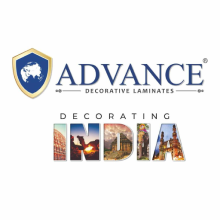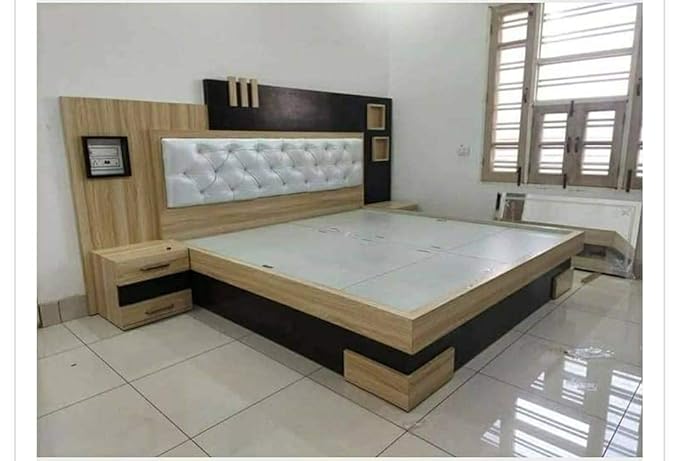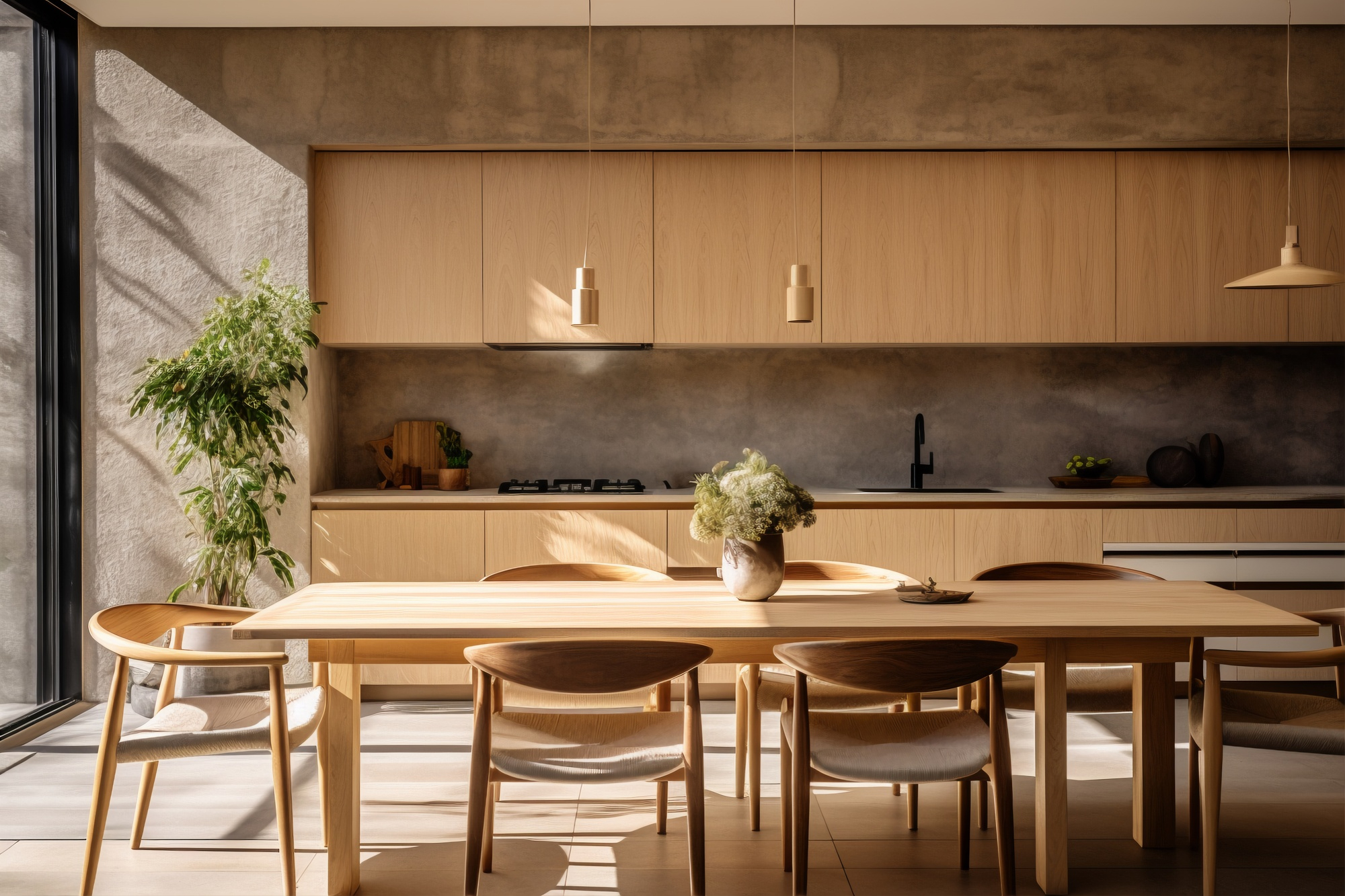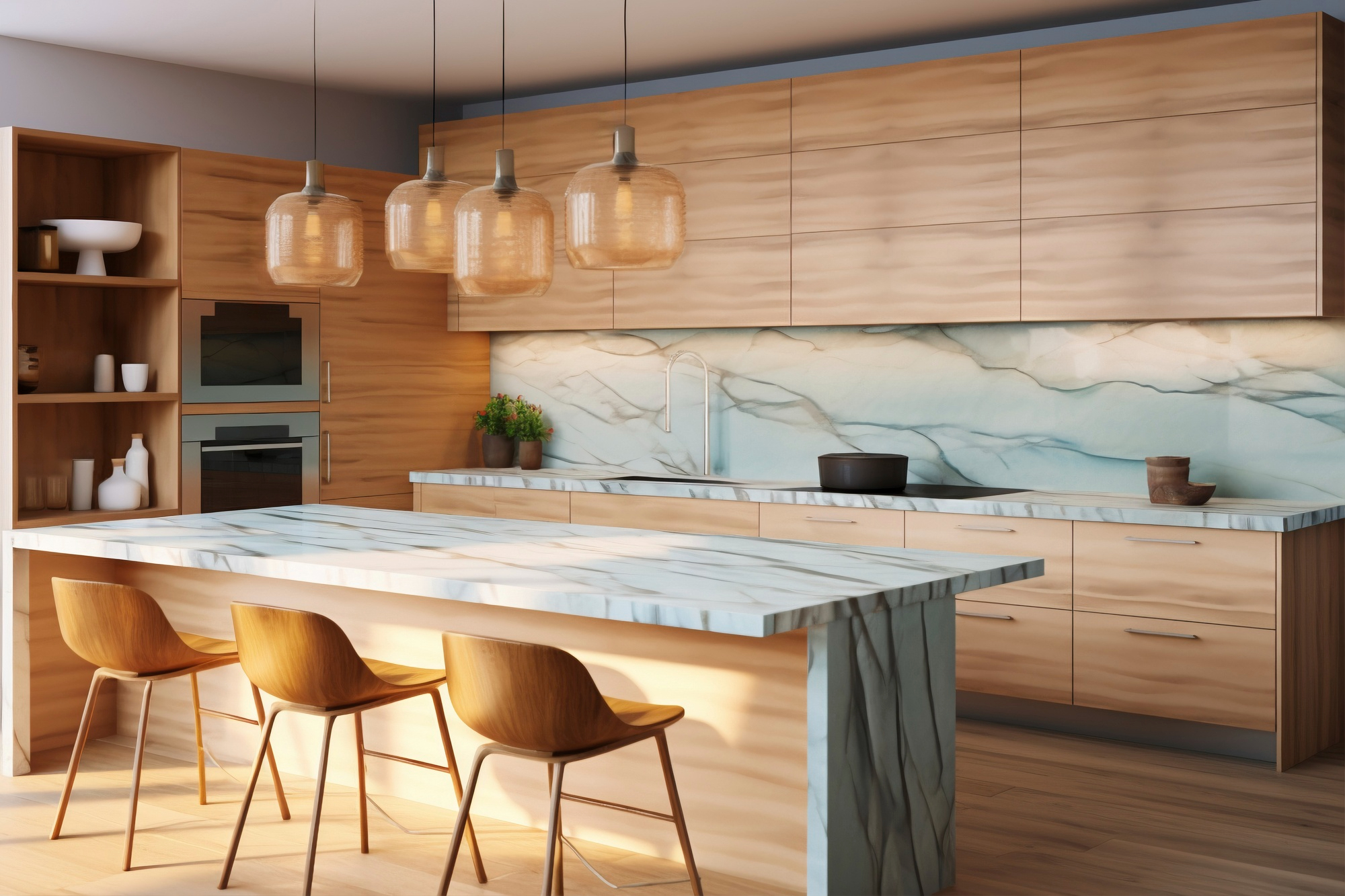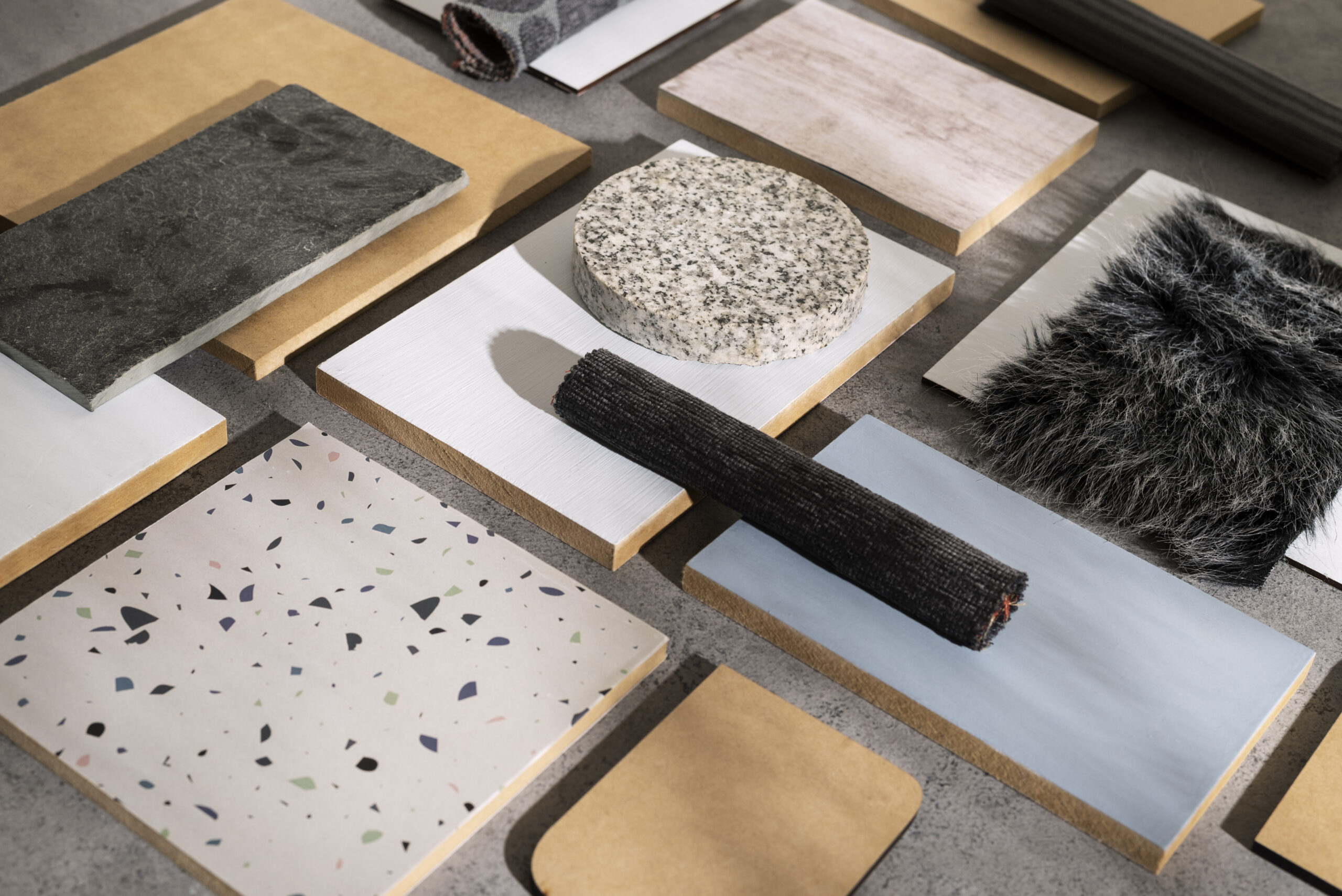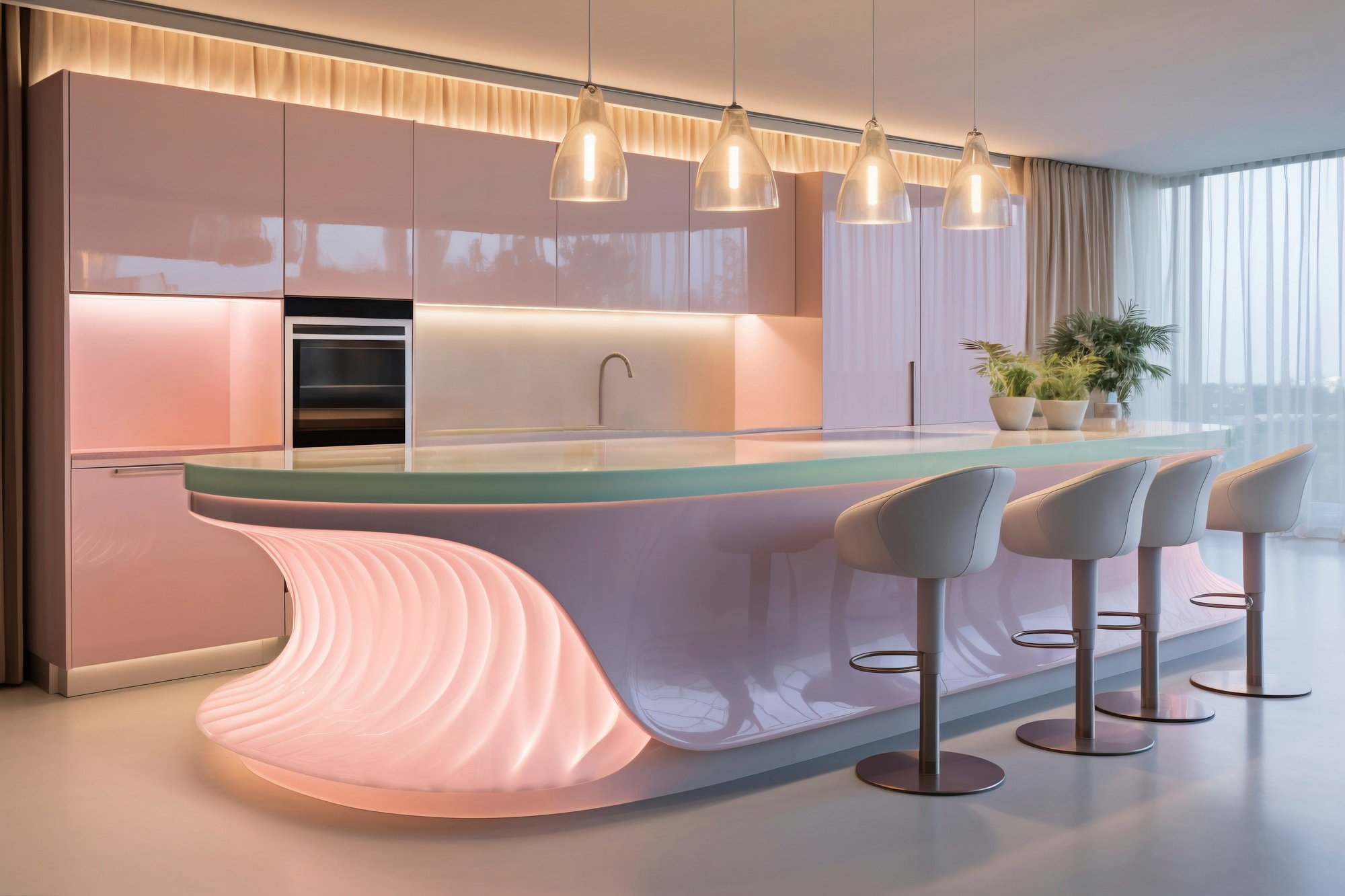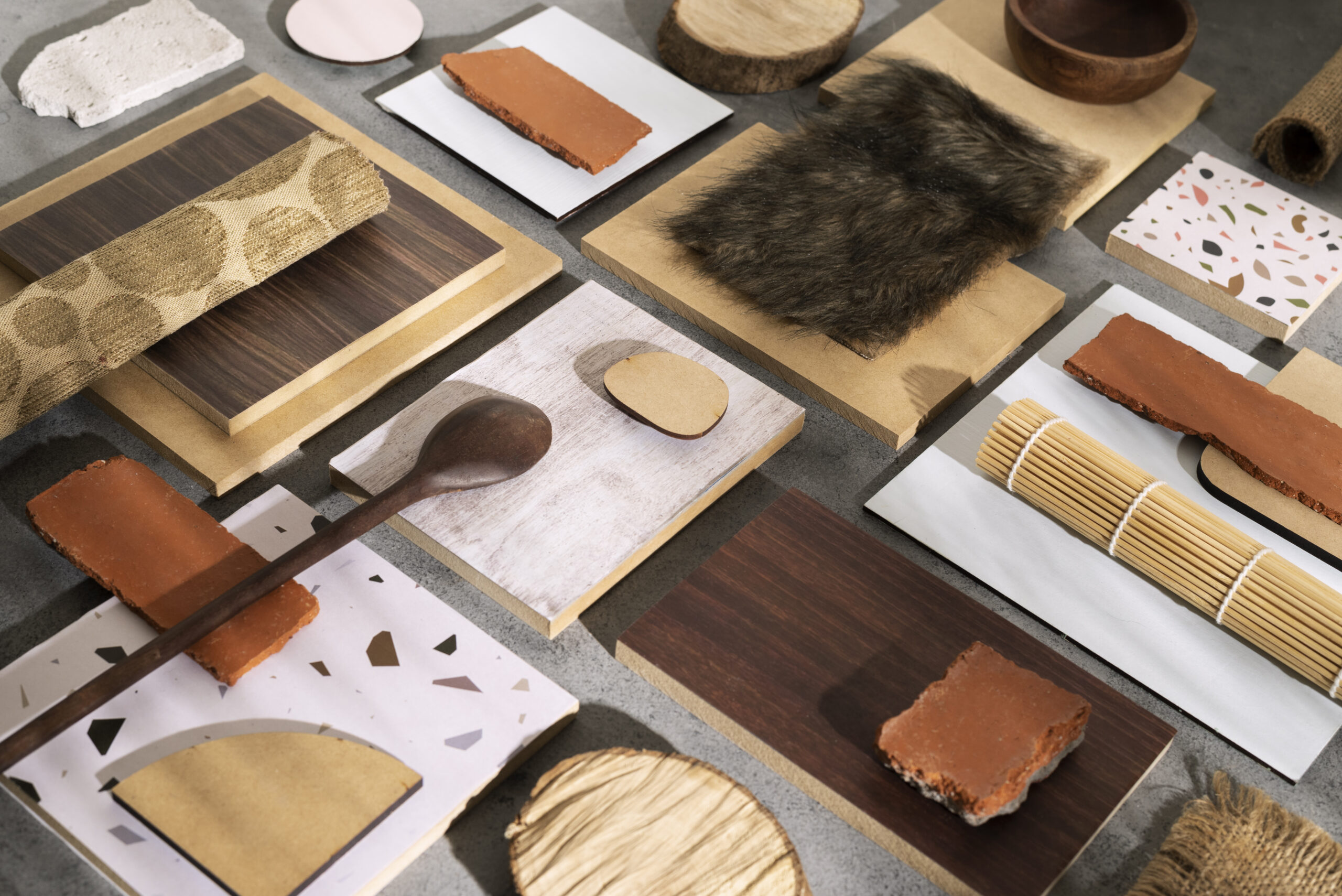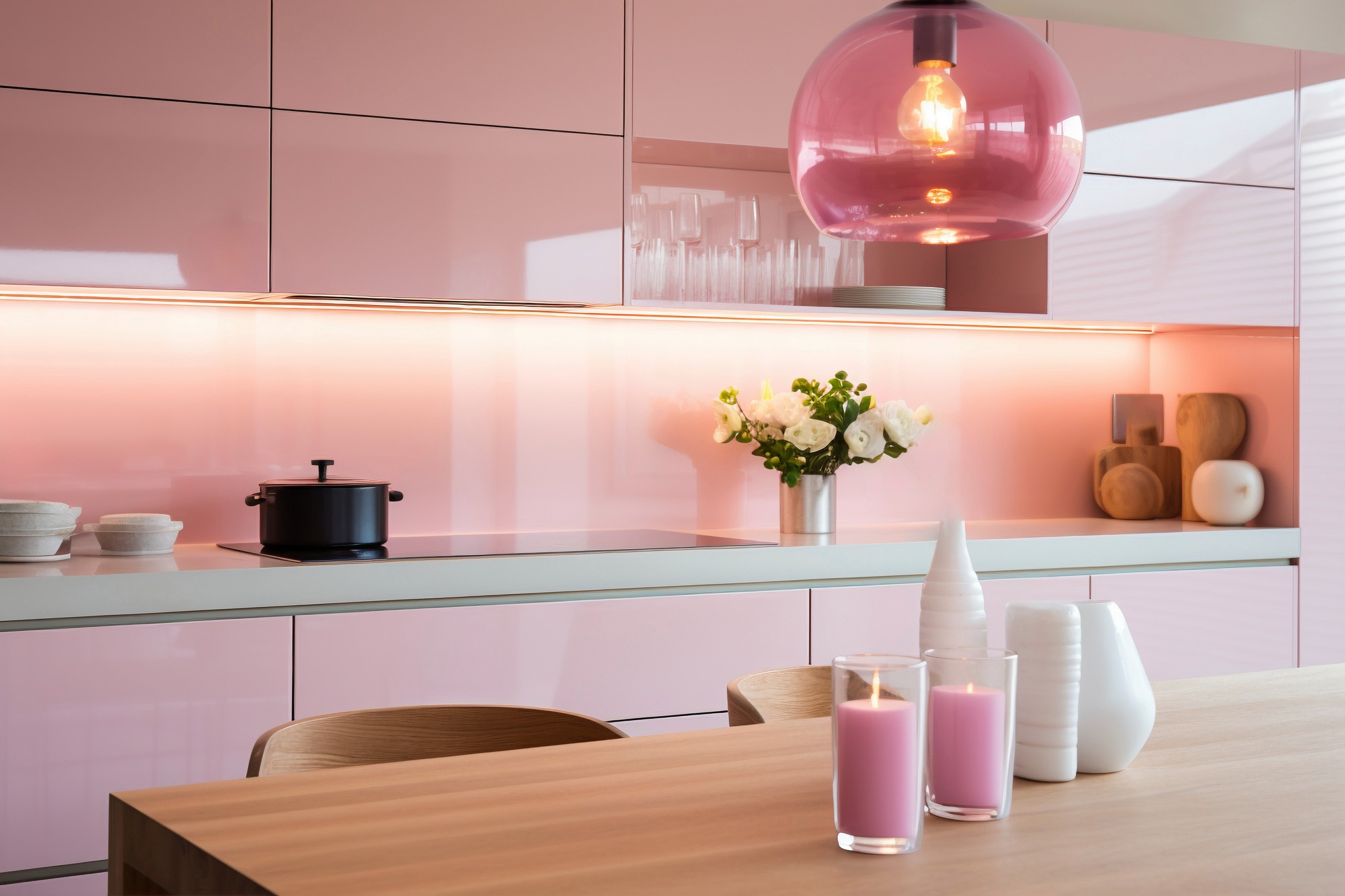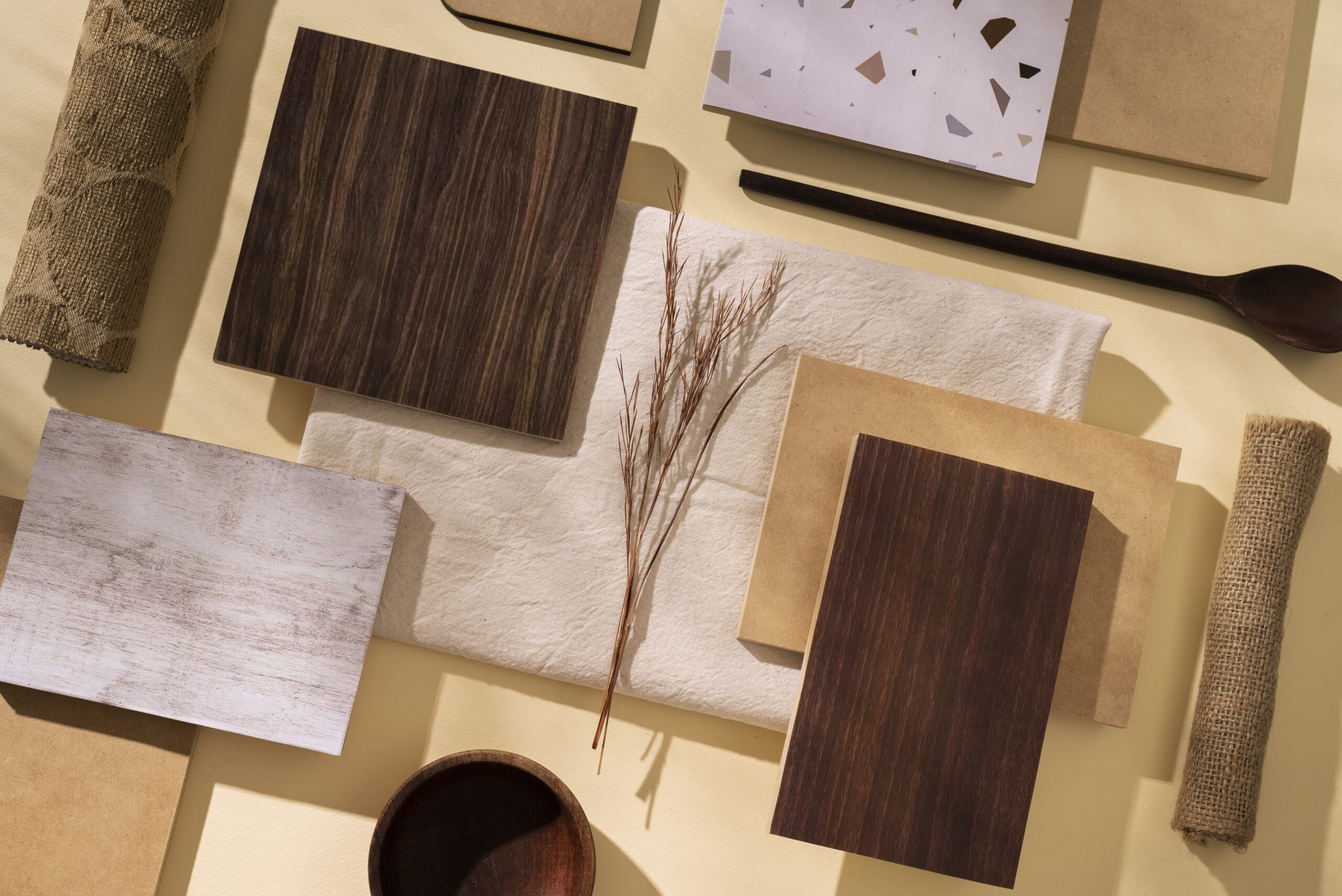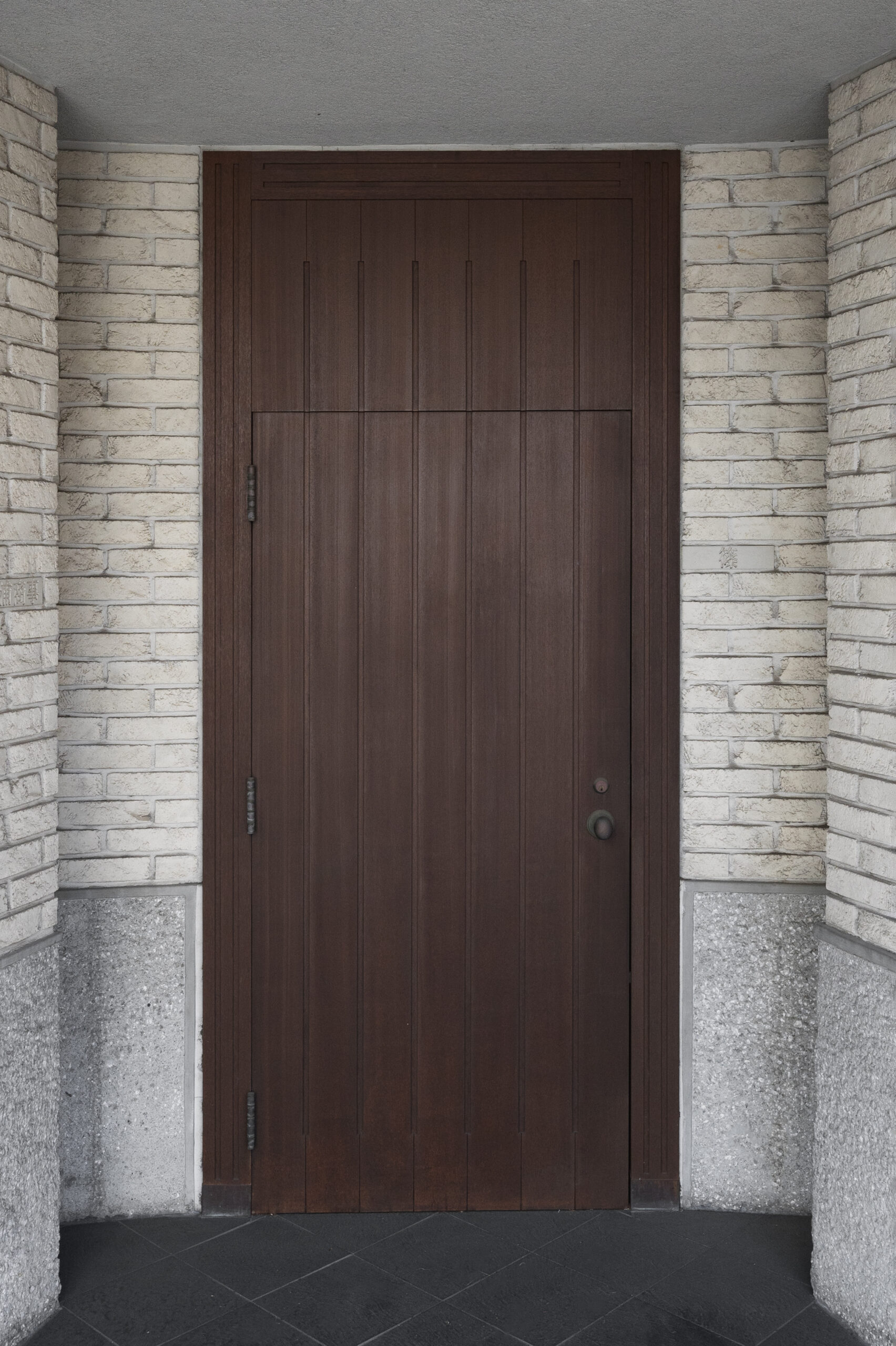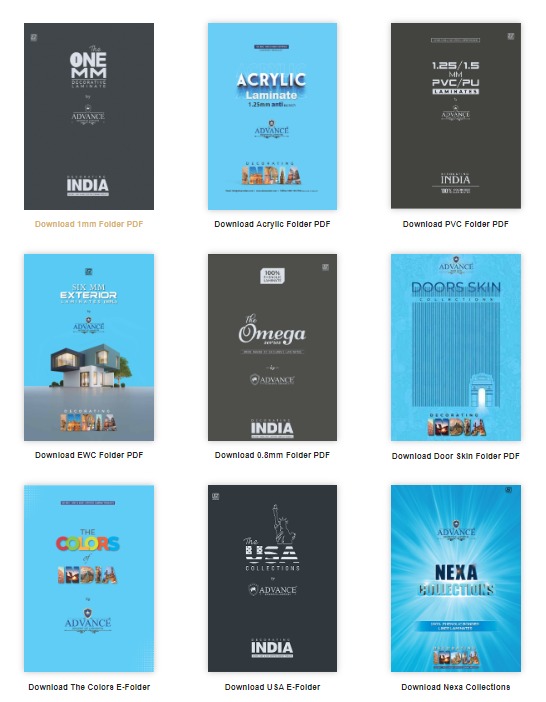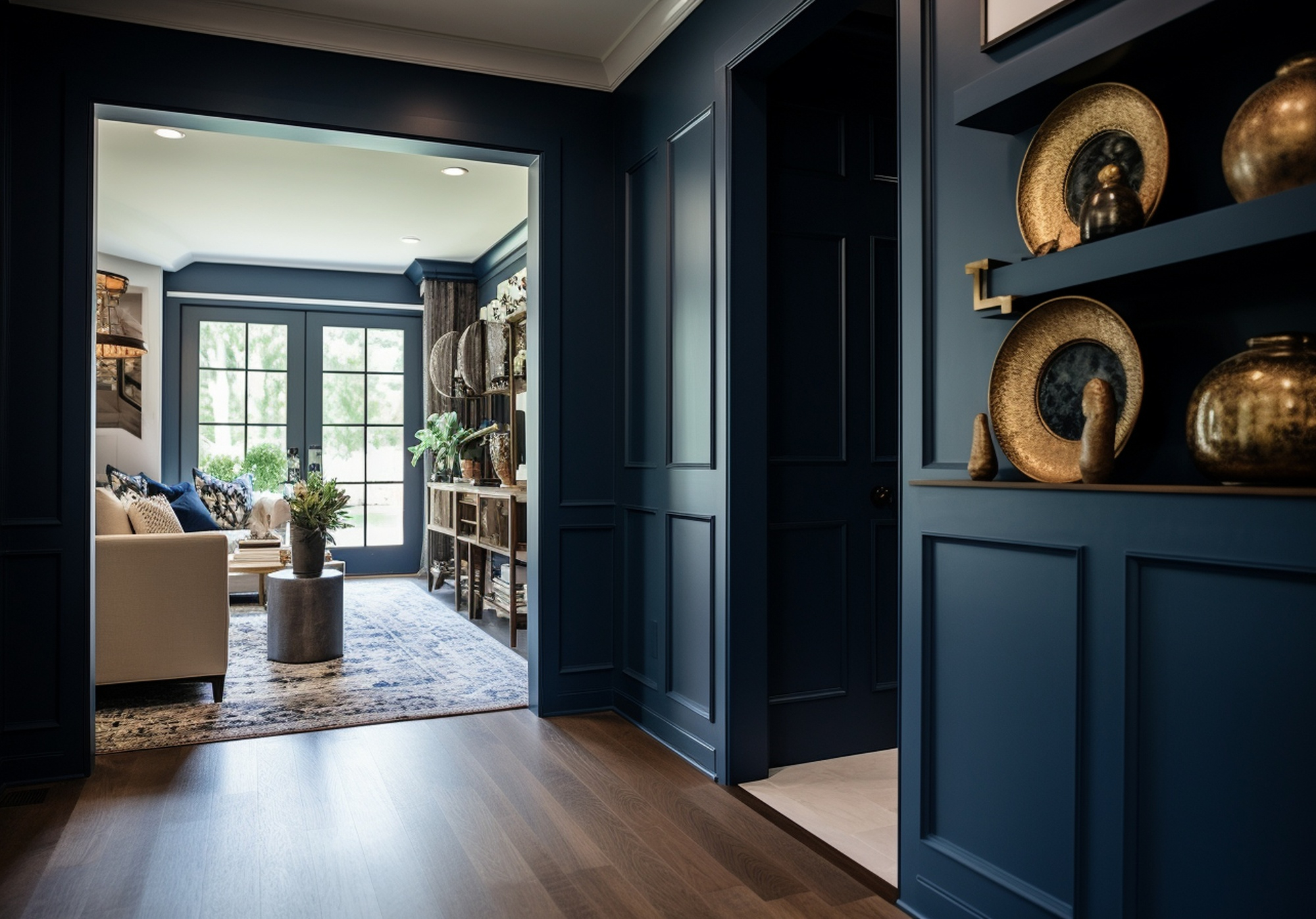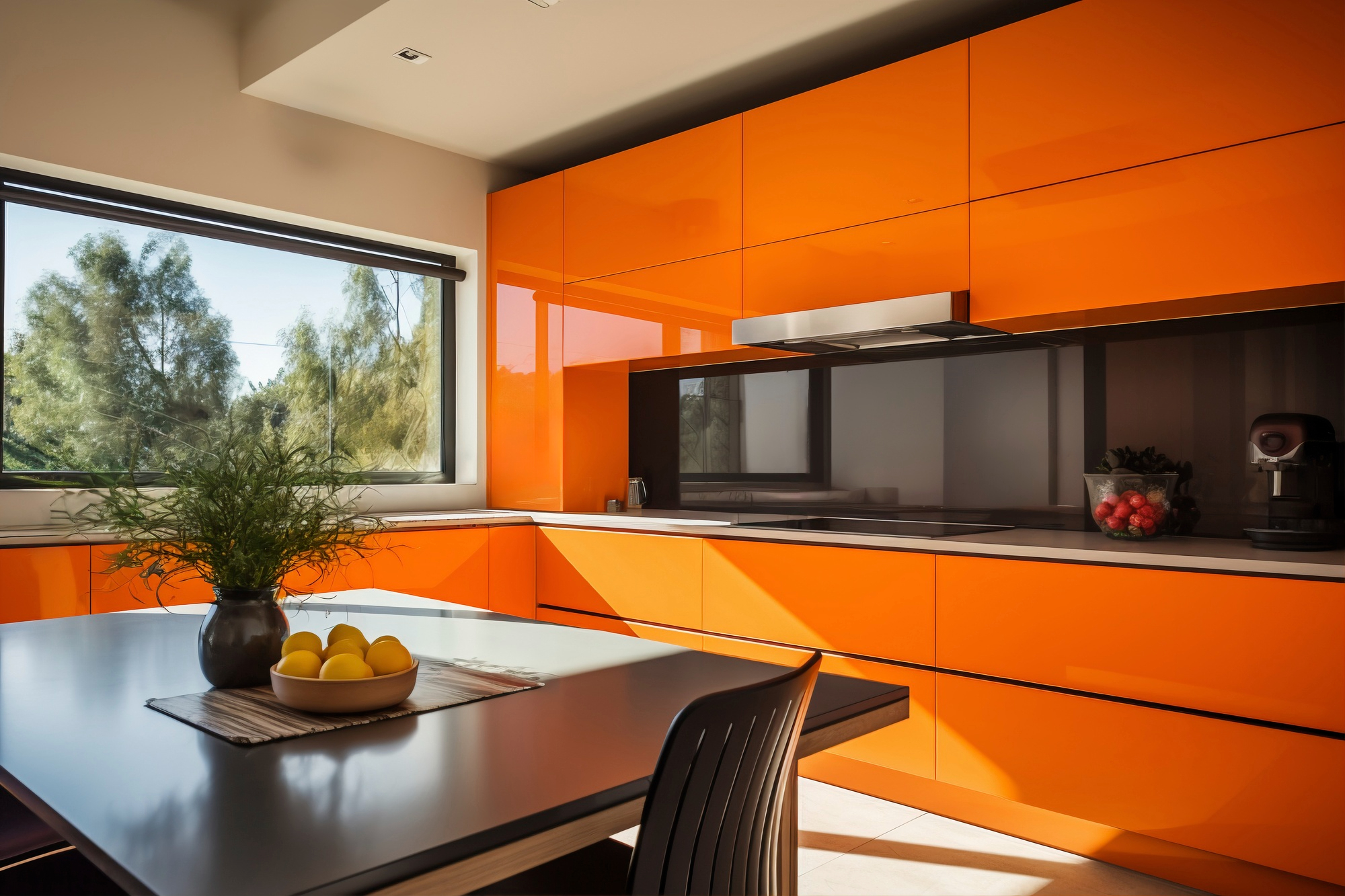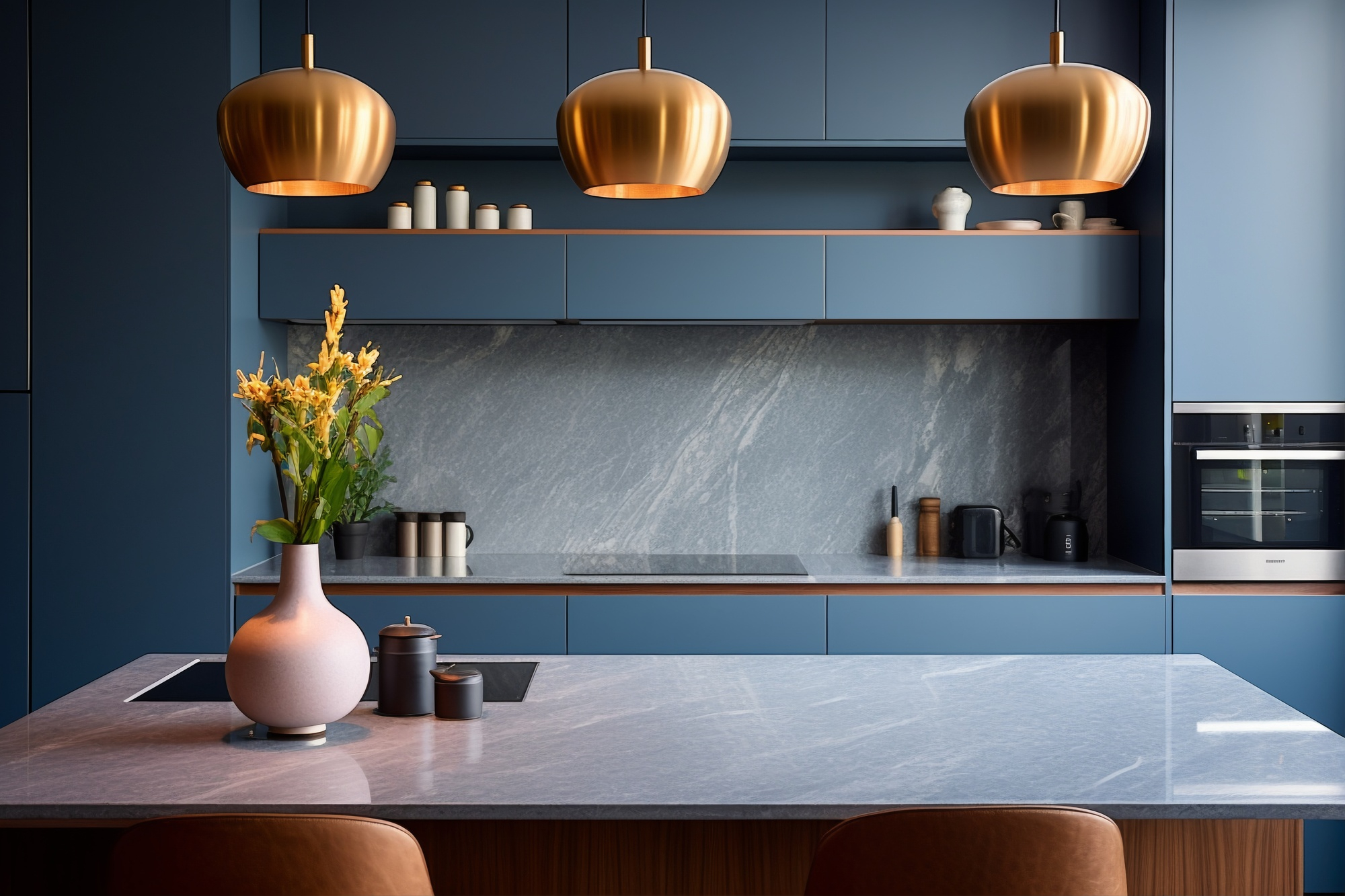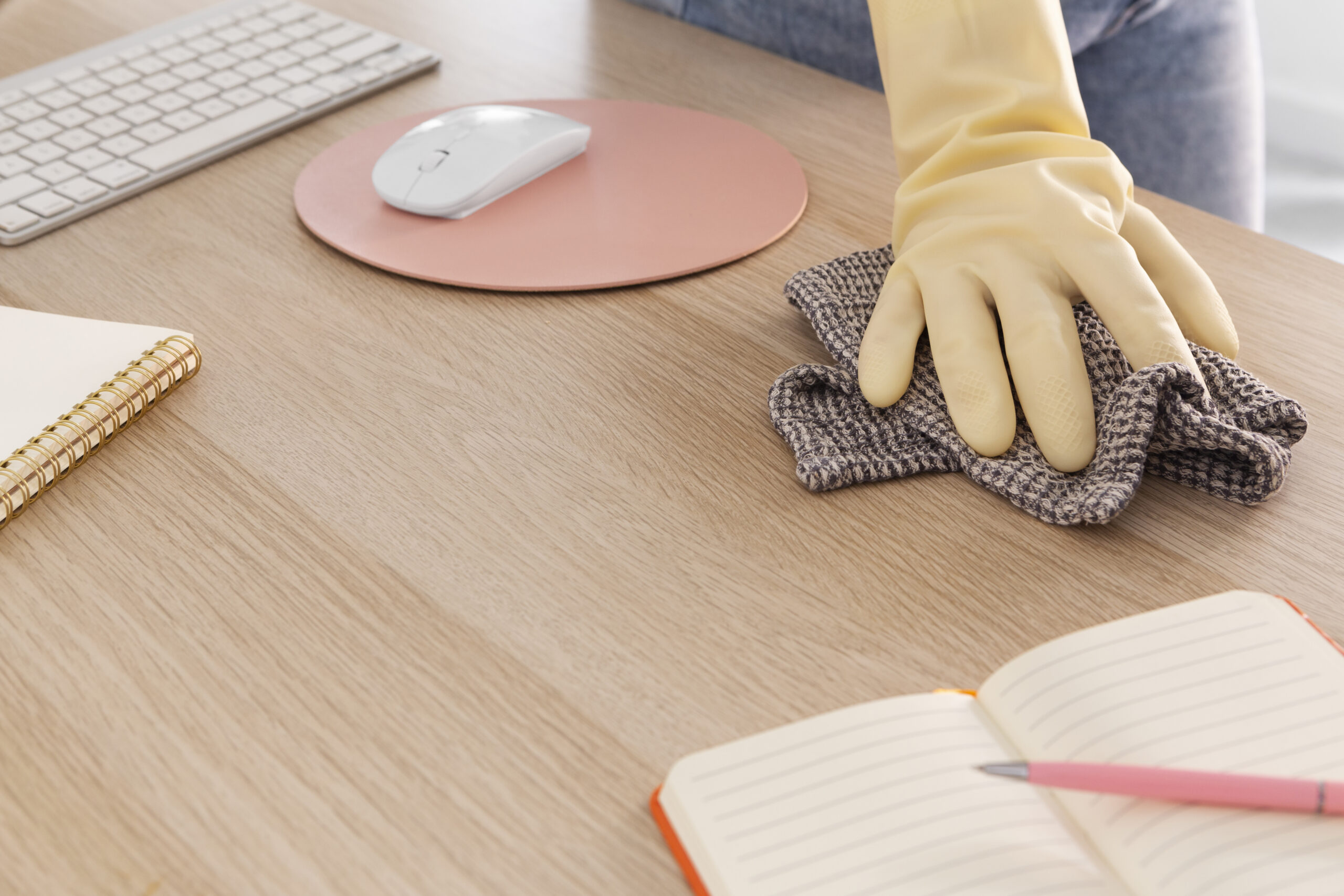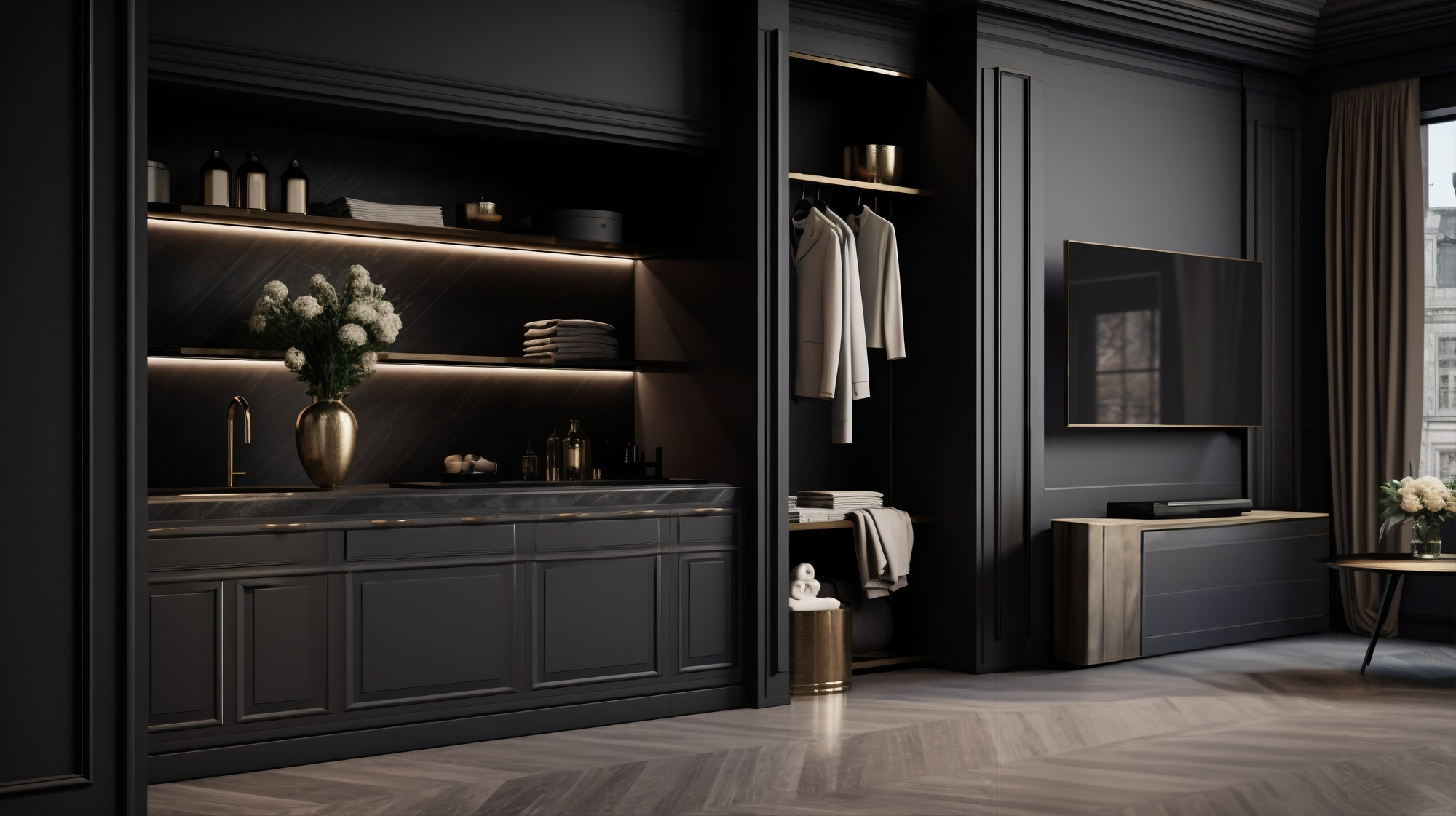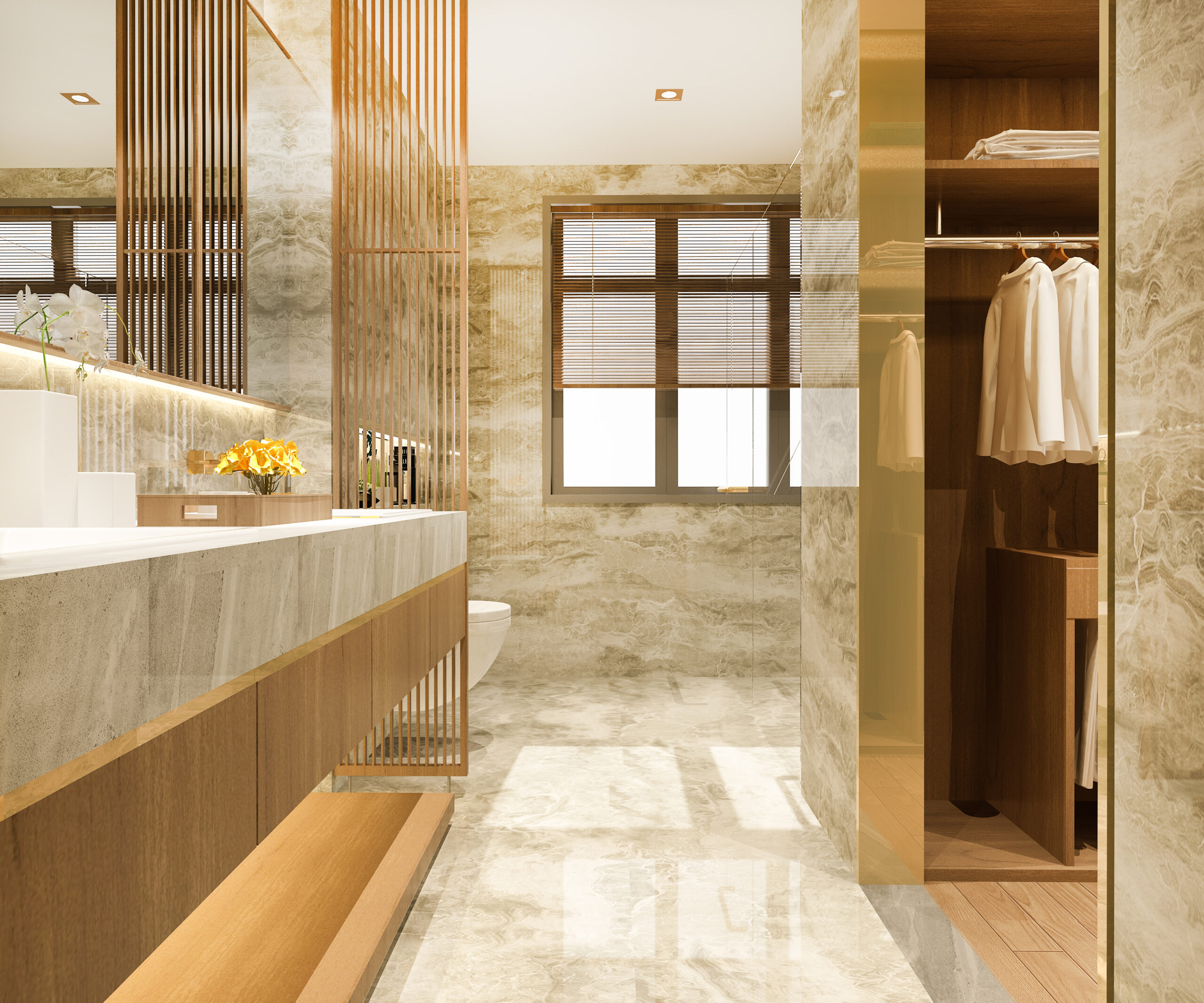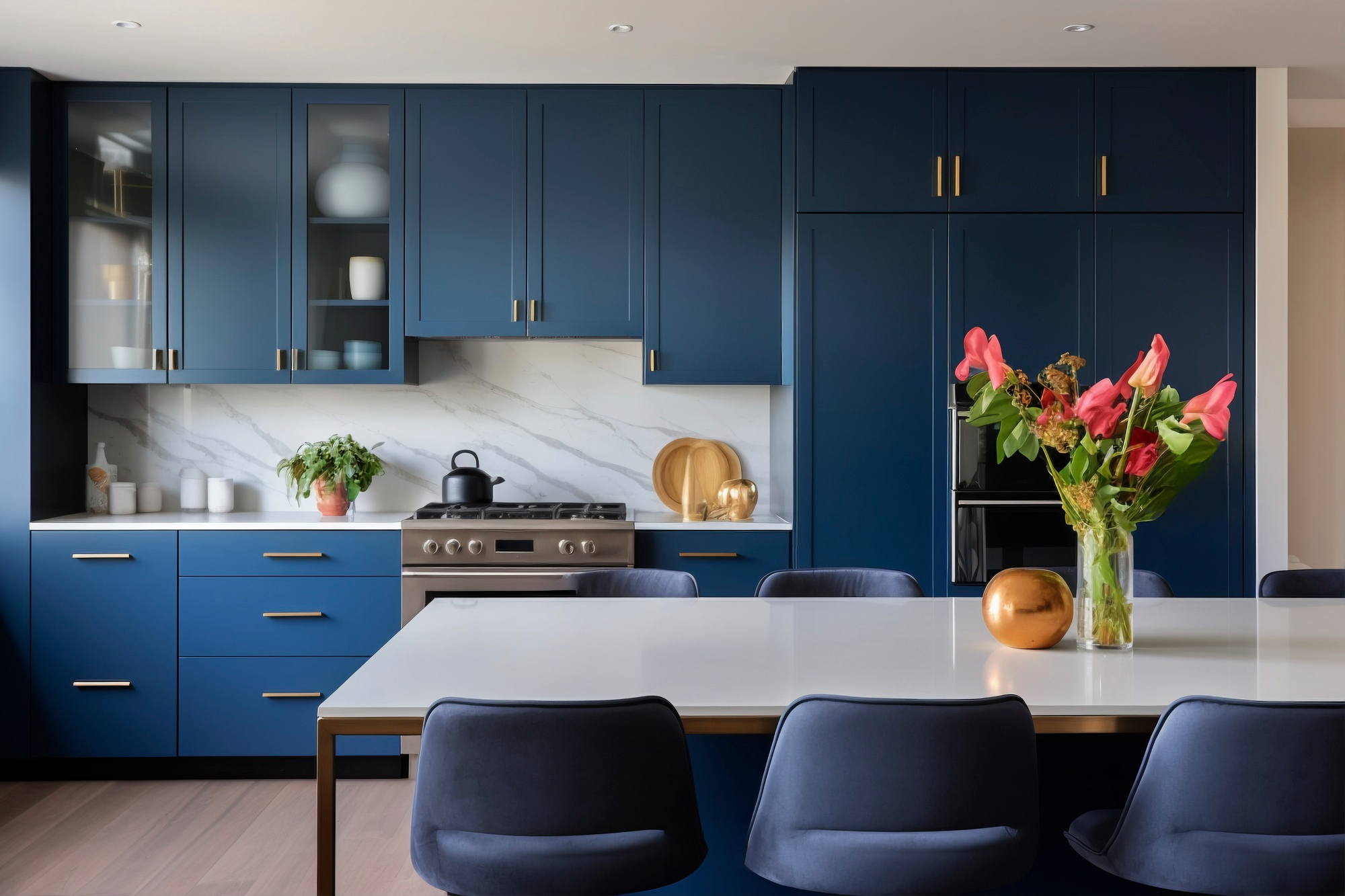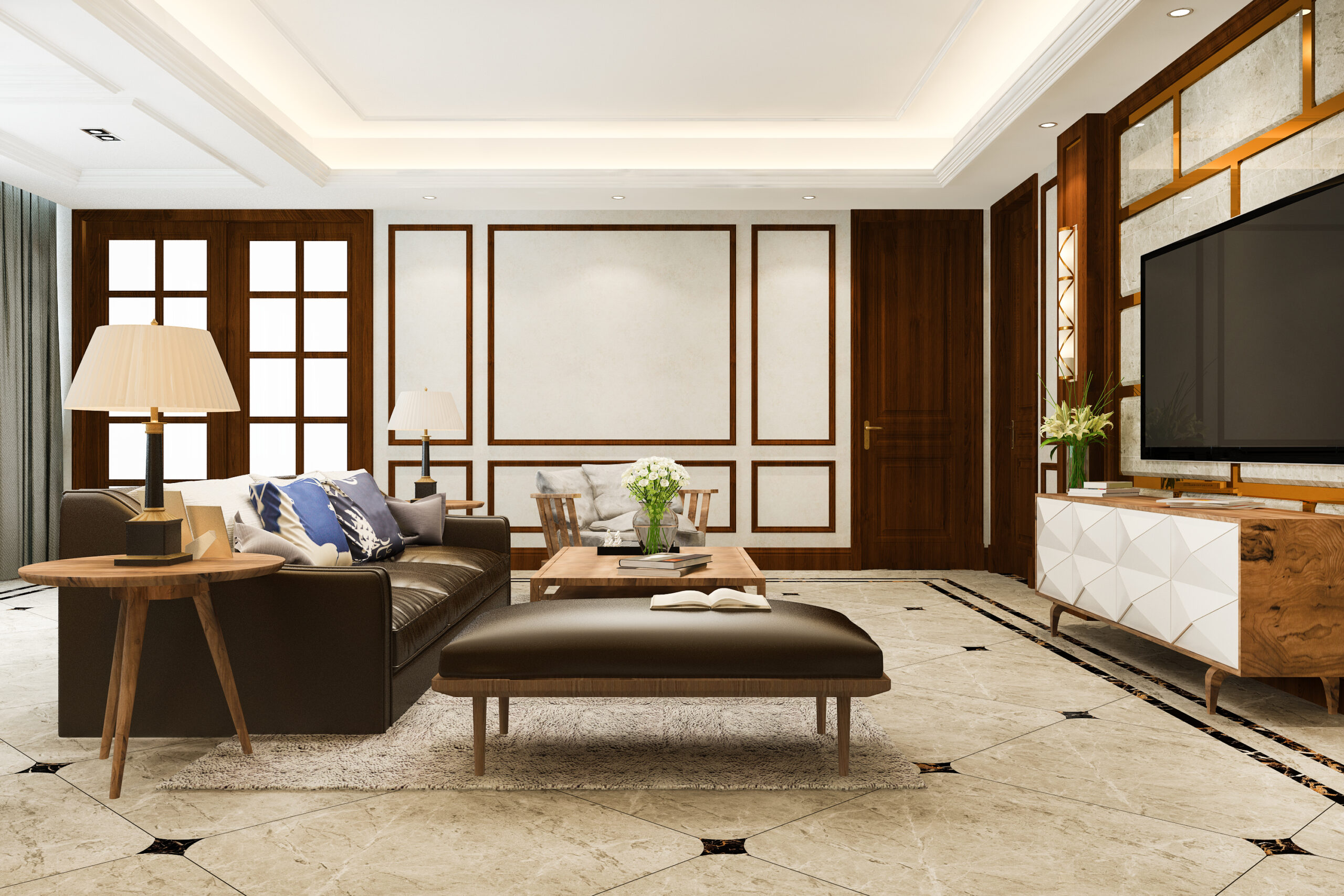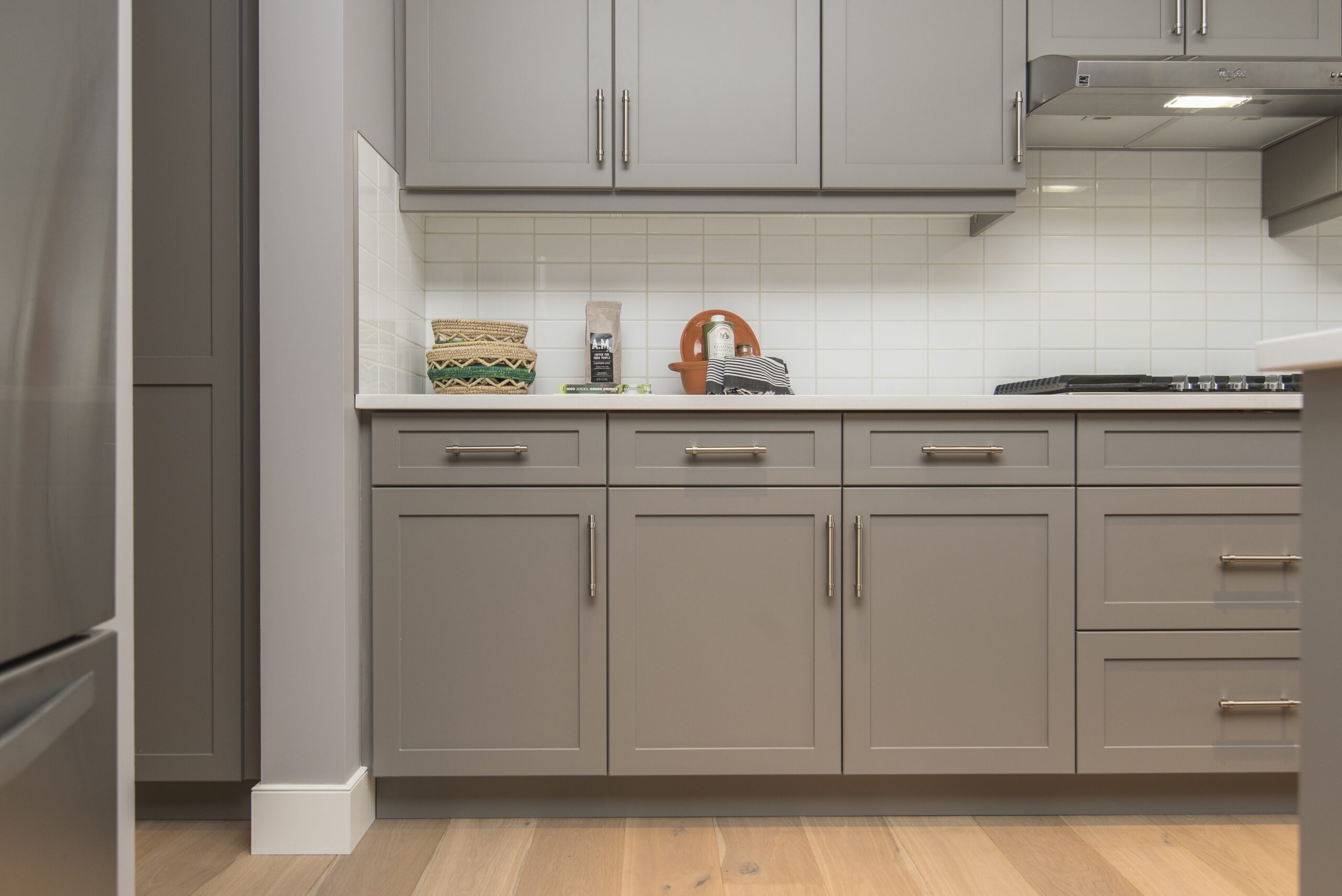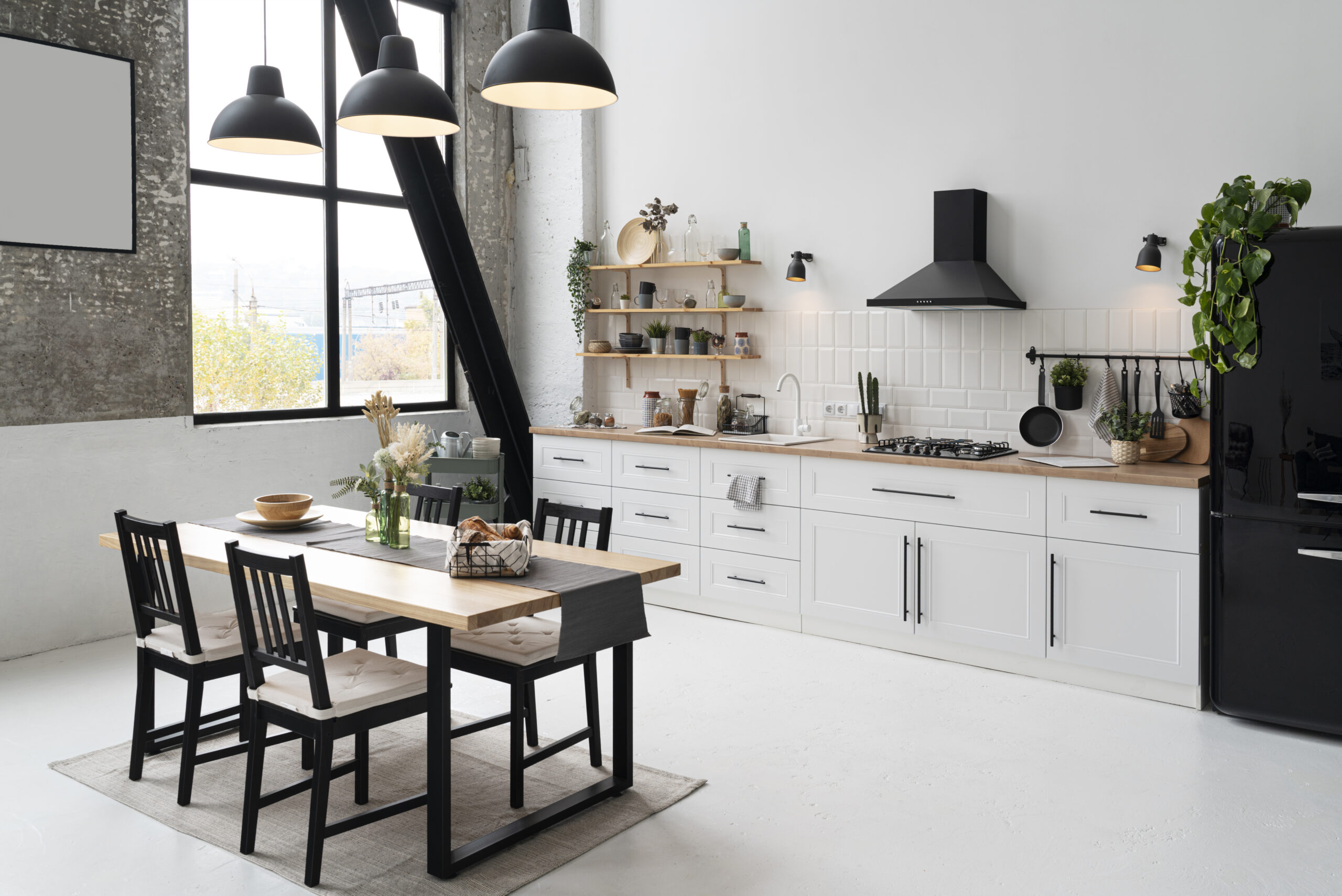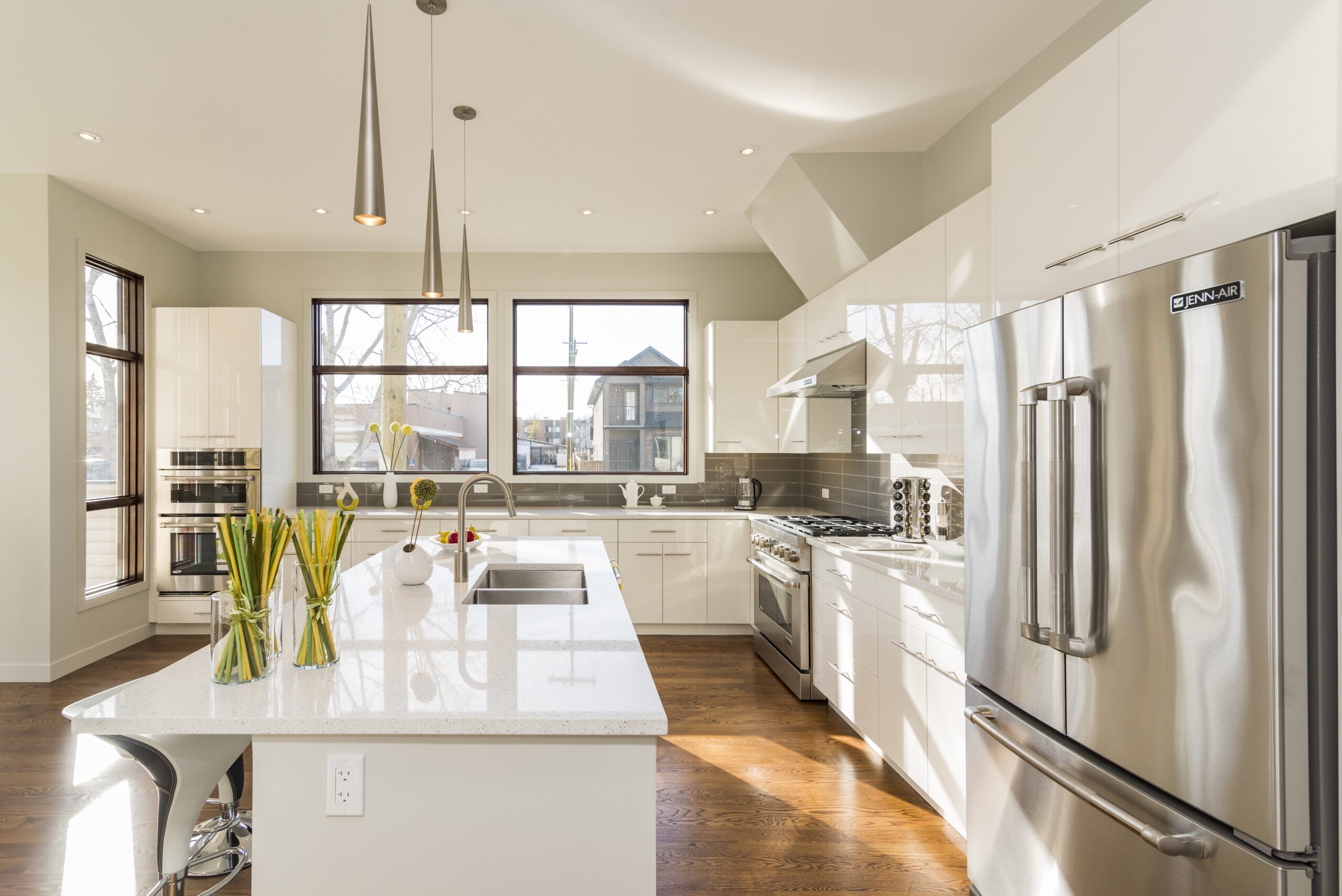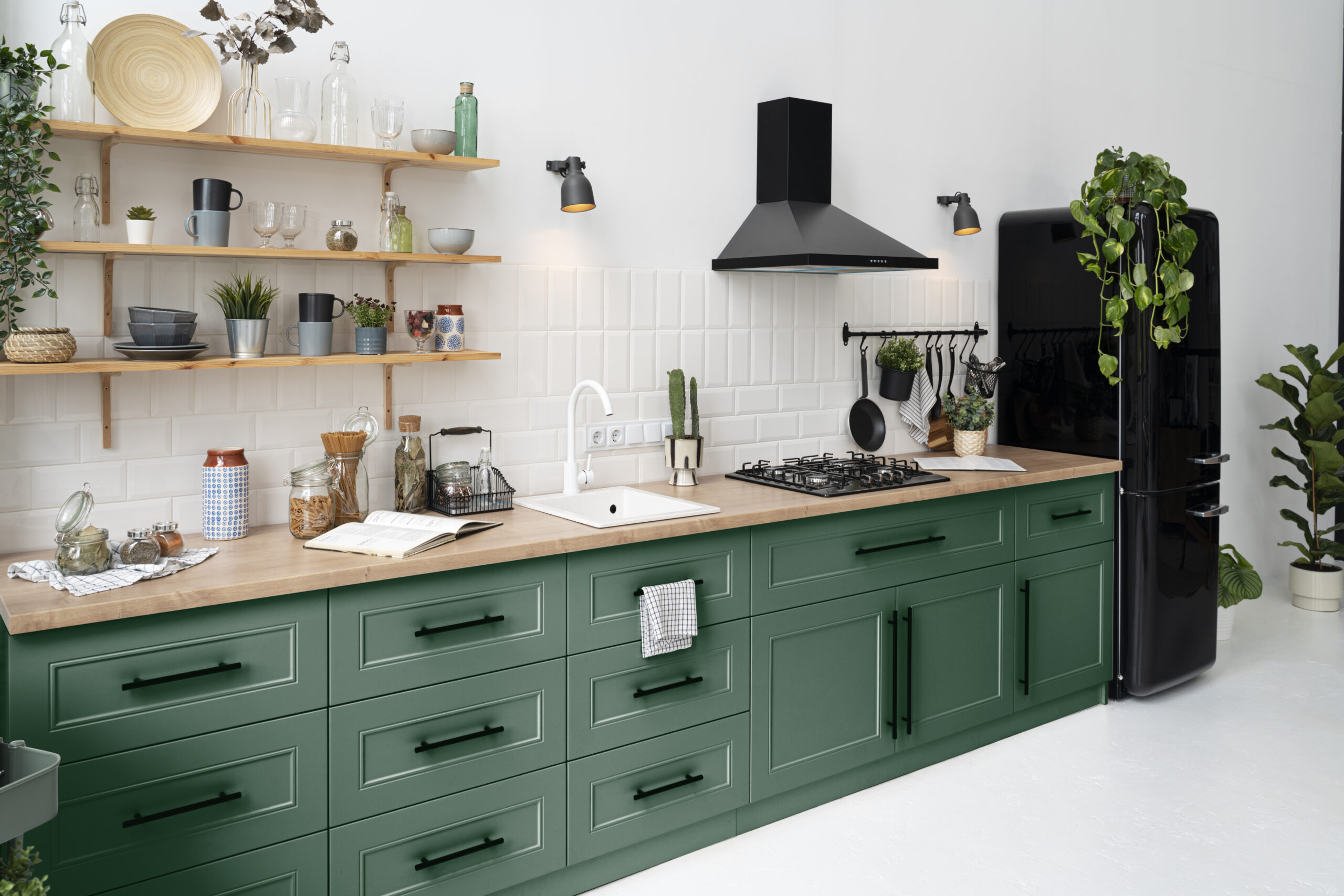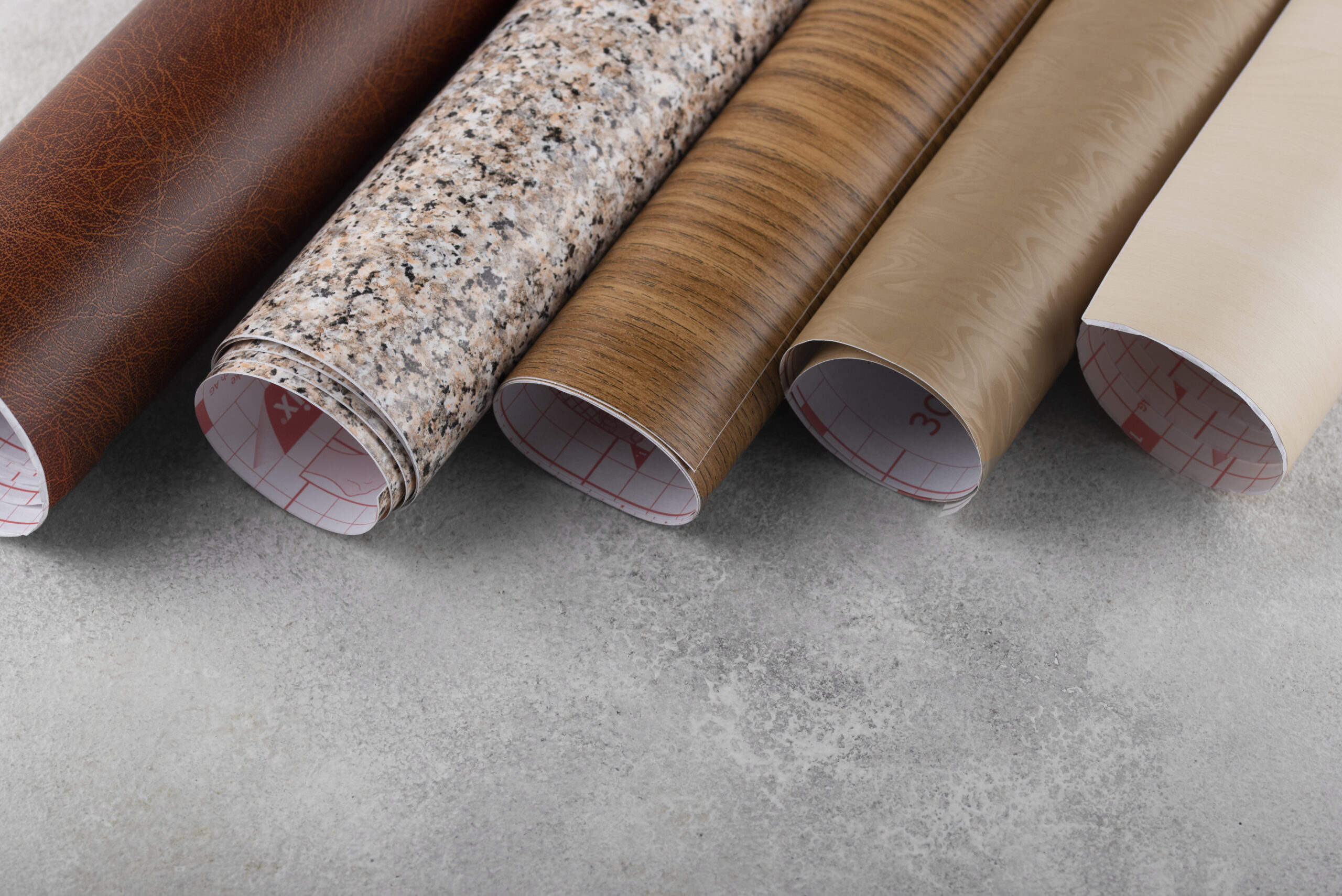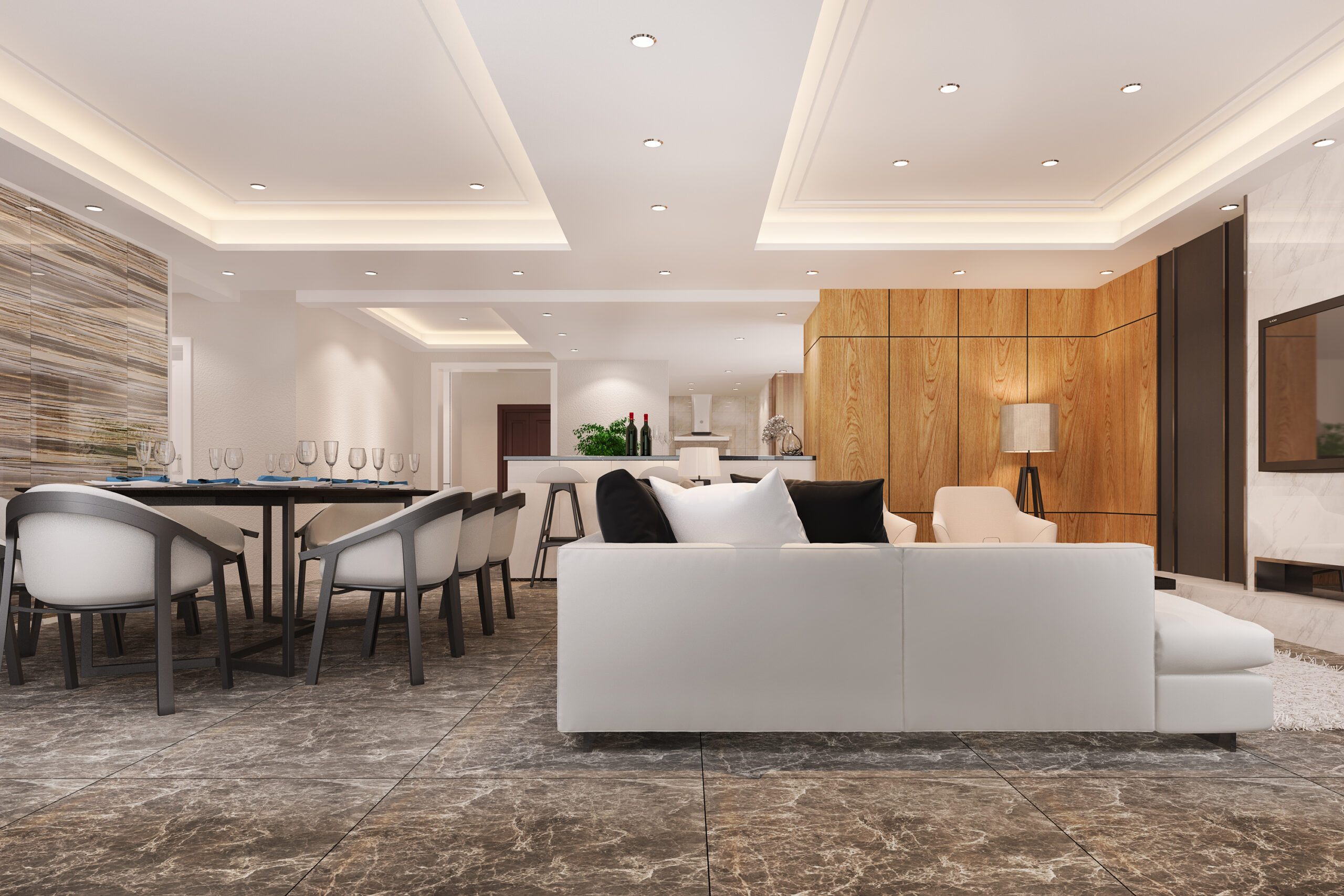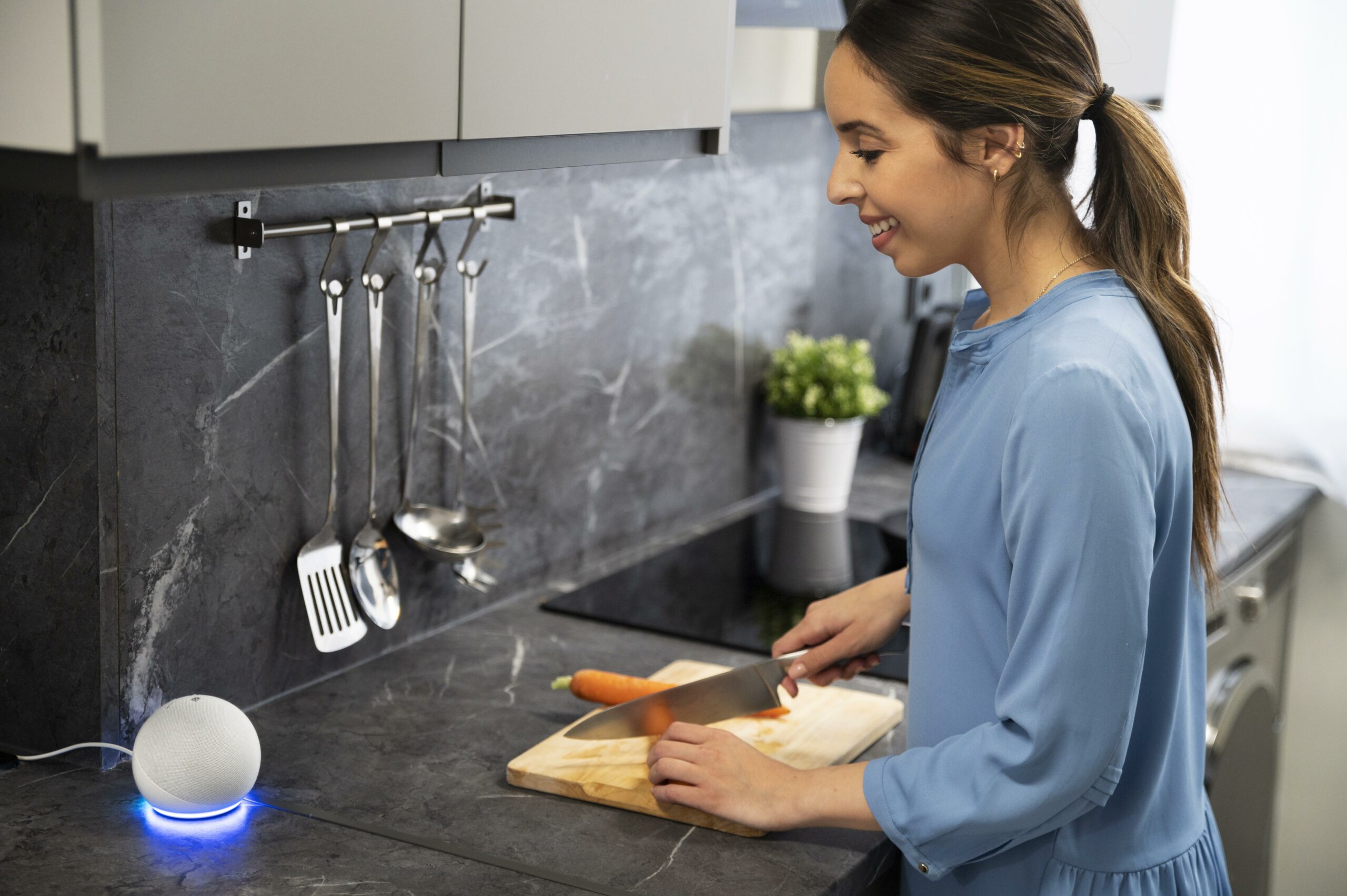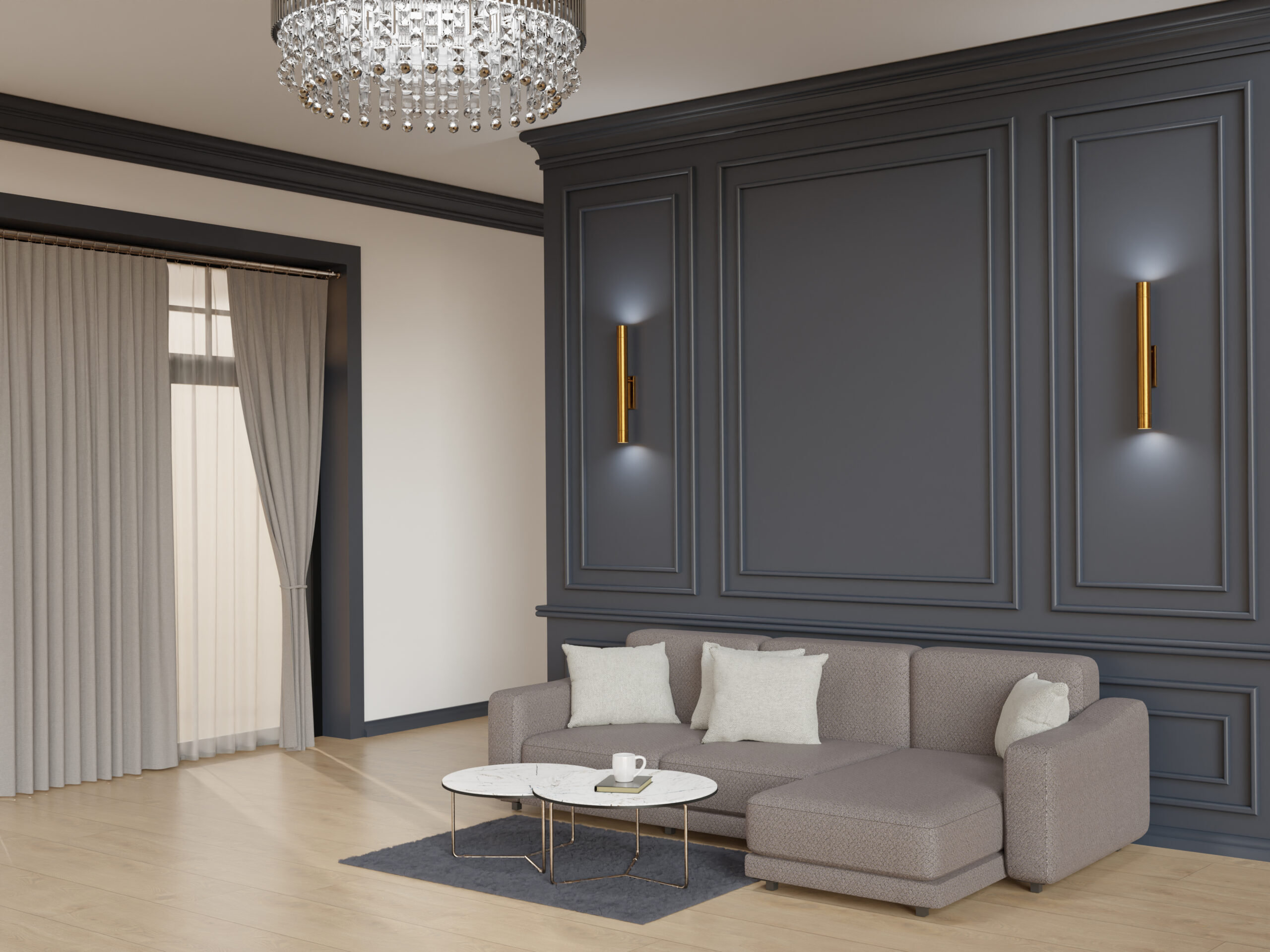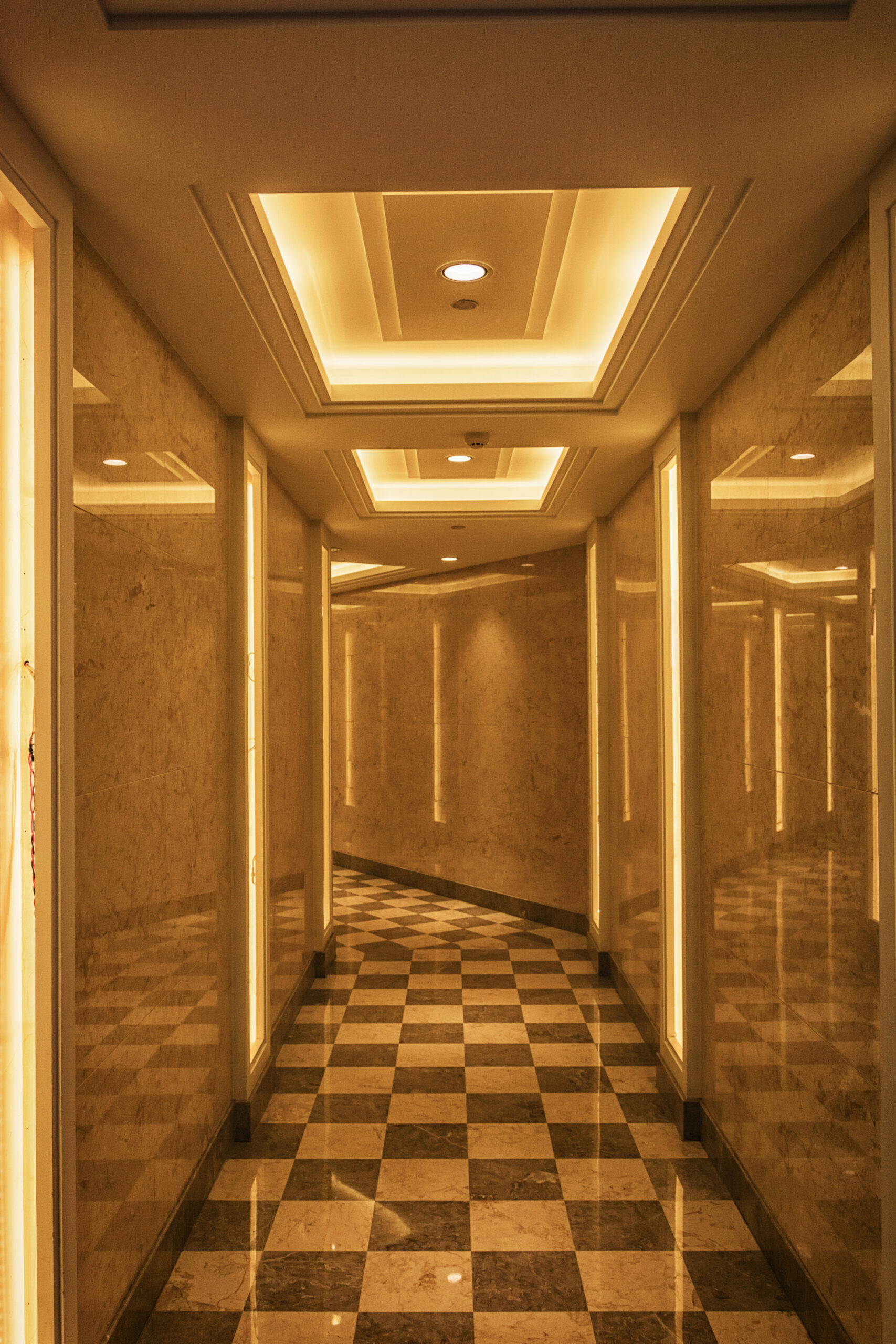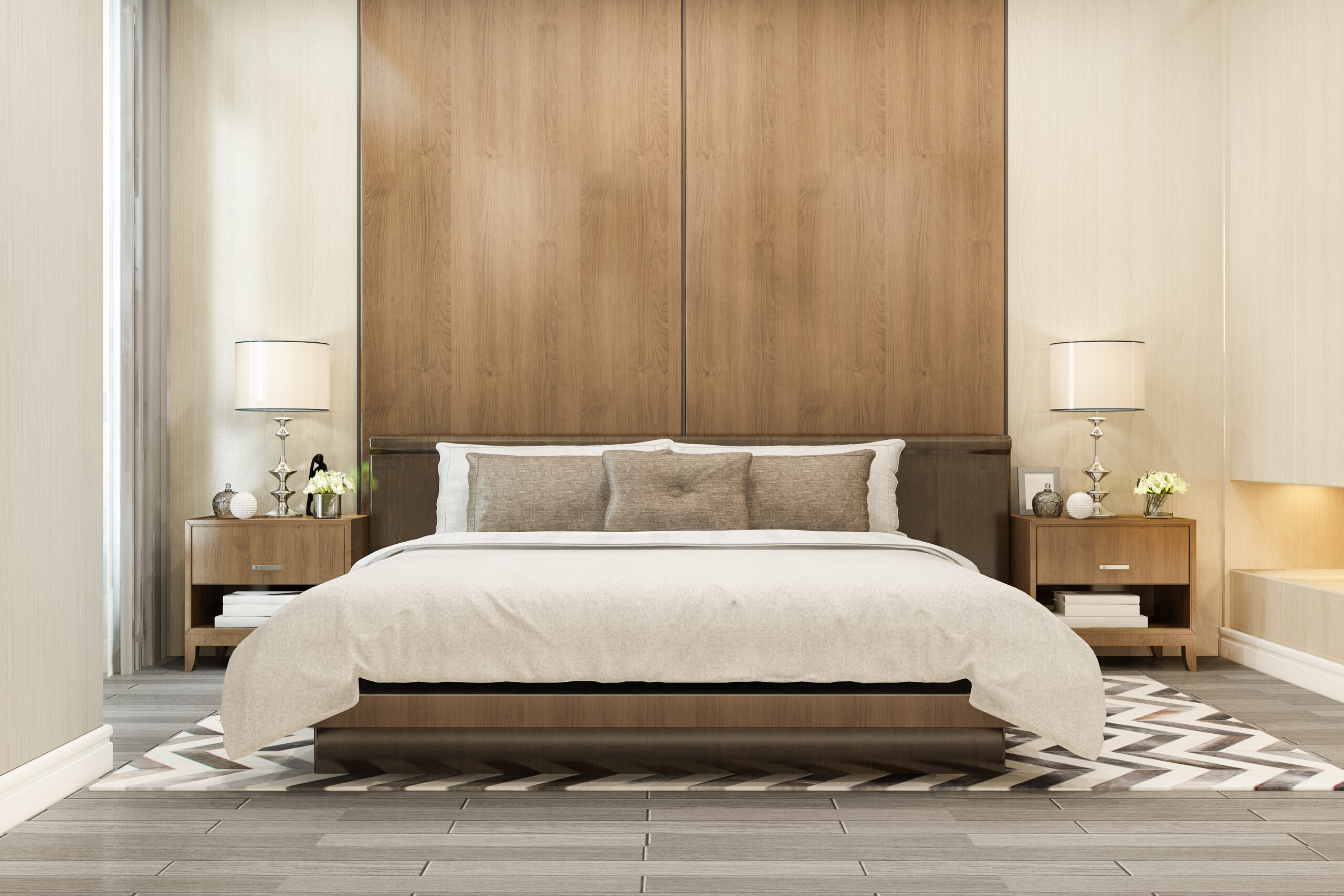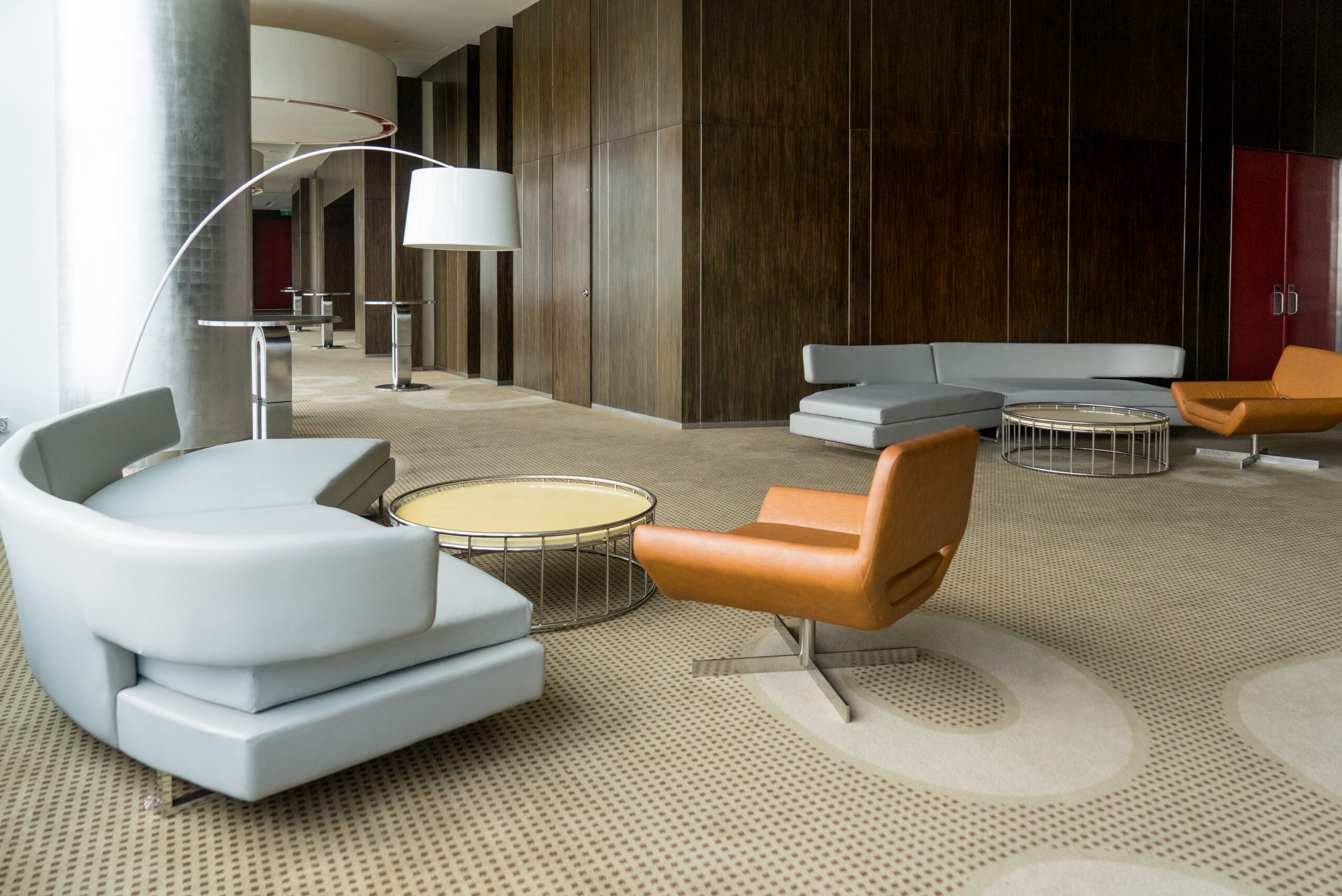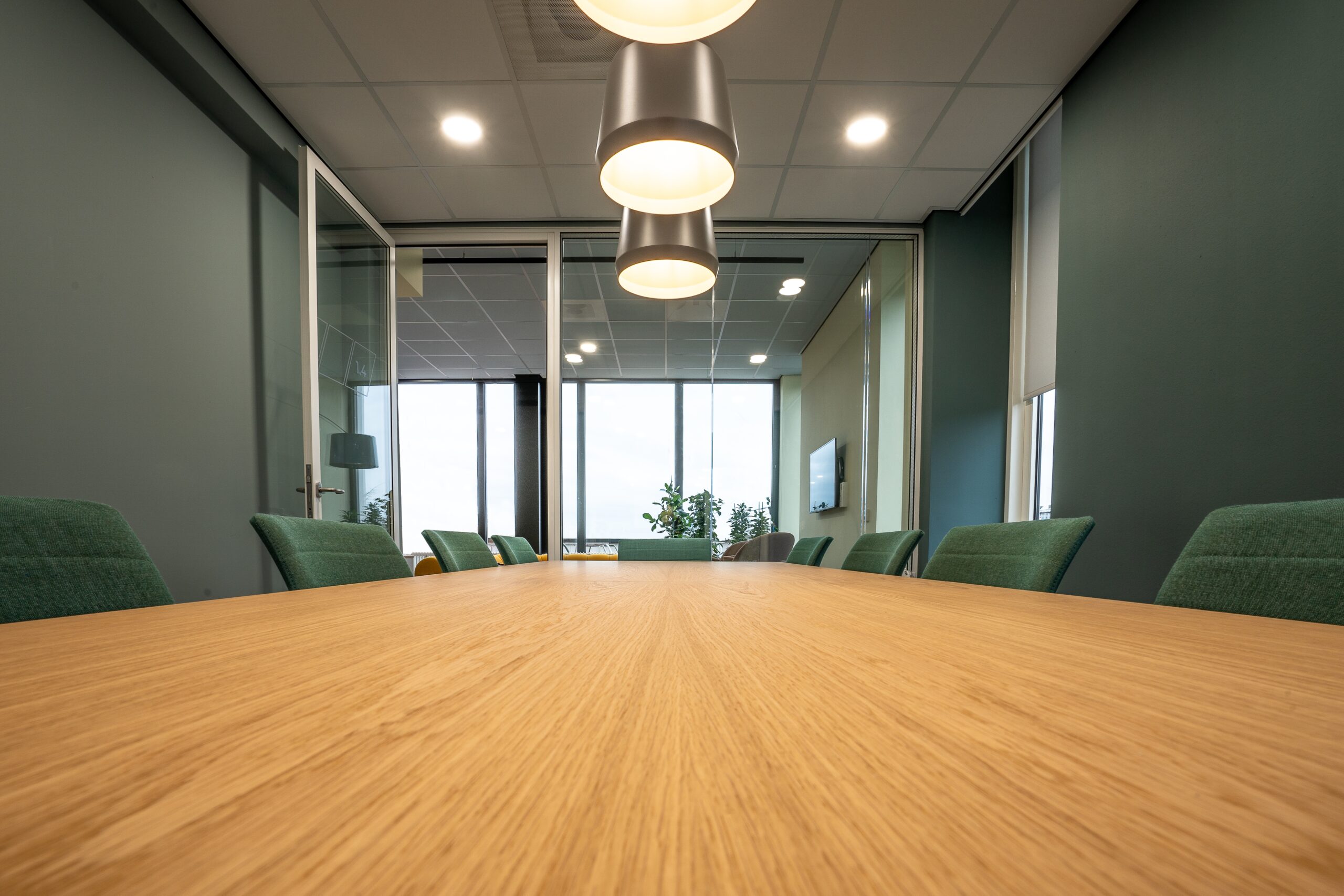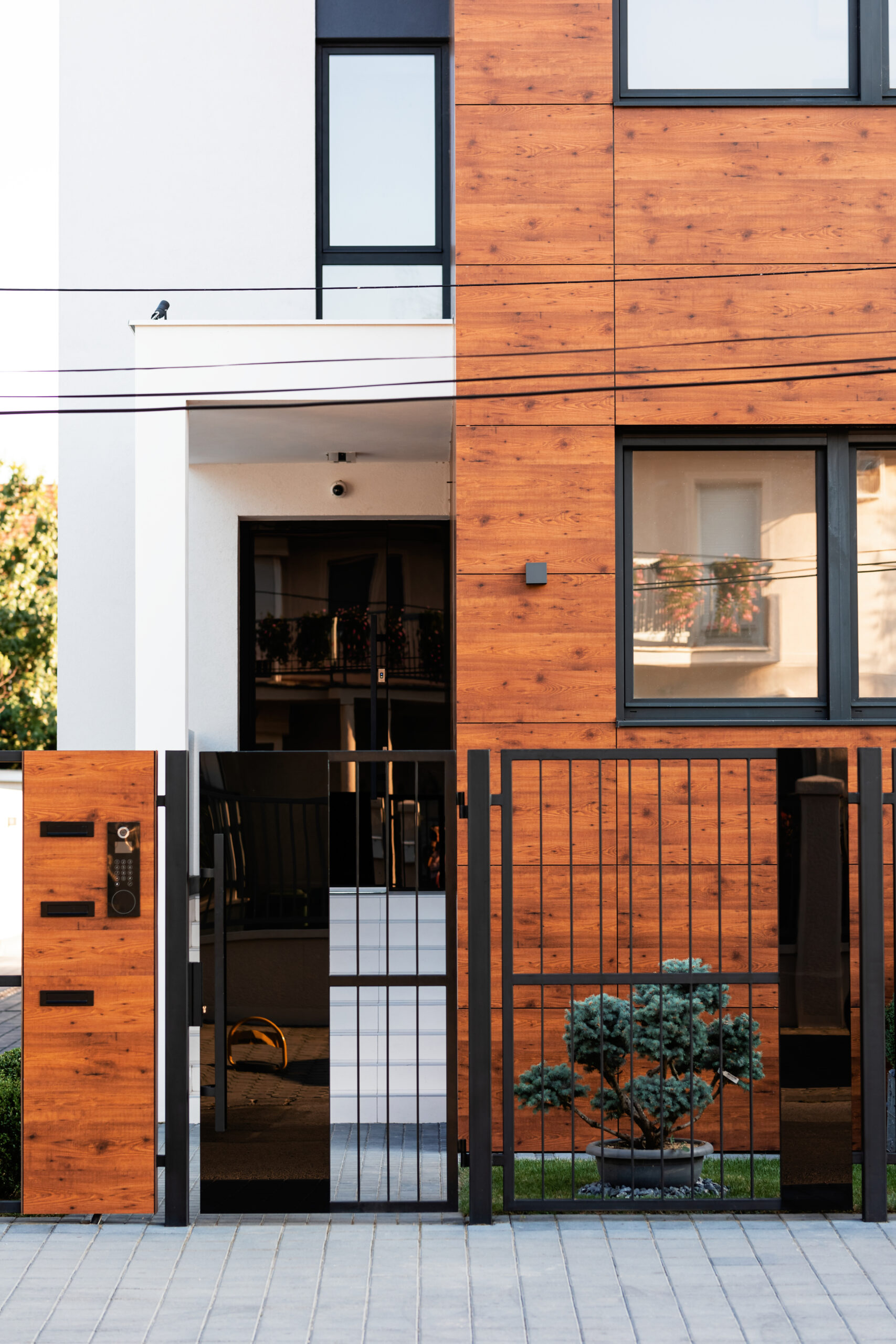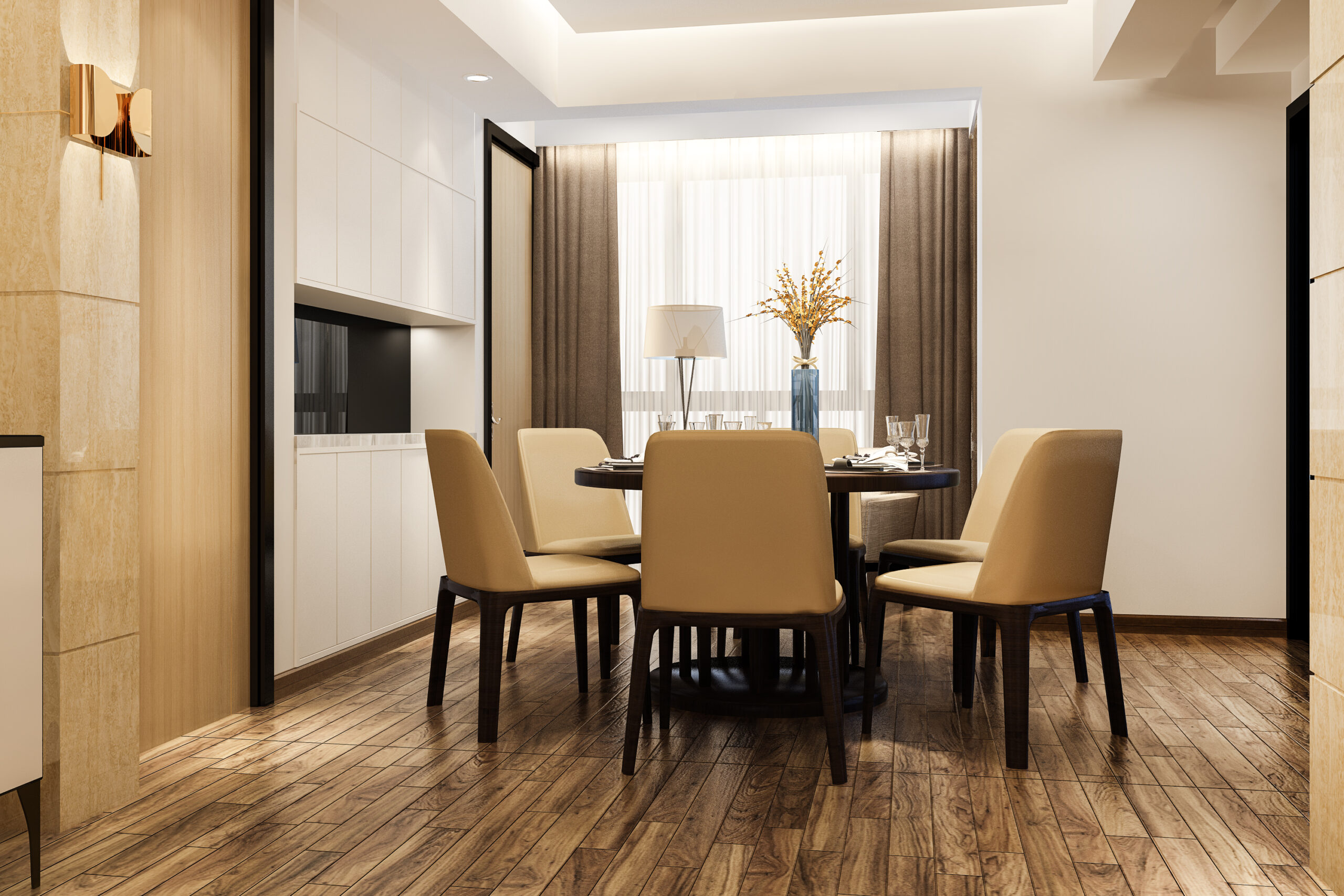Pros and Cons of Laminates Doors?
Laminated doors, also known as laminate doors, are a popular choice for interior and exterior applications due to their durability, aesthetic appeal, and cost-effectiveness. Here are some pros and cons of laminated doors:
Pros of Laminated Doors (Laminated Doors Benefits):
- Variety of Designs: Laminated doors come in a wide range of designs, colors, and textures, allowing homeowners to choose a style that complements their interior decor.
- Cost-Effective: Laminated doors are generally more affordable than solid wood or other high-end door materials, making them a budget-friendly option.
- Low Maintenance: These doors are easy to clean and maintain. They are resistant to stains, scratches, and moisture, which makes them suitable for high-traffic areas.
- Durable: Laminated doors are highly durable and resistant to wear and tear, making them a long-lasting choice for both residential and commercial applications.
- Versatility: They can be used for interior and exterior doors, offering flexibility in design and functionality.
- Environmentally Friendly: Many laminated doors are made from sustainable materials, which can contribute to eco-friendly building practices.
- Customization: Laminates can be easily customized with different finishes, patterns, and sizes to meet specific design and architectural requirements.
- Sound Insulation: Some laminated doors provide good sound insulation, which can help reduce noise between rooms or from the outside.
Cons of Laminated Doors (Laminated Doors Drawbacks):
- Not as Luxurious as Solid Wood: While laminated doors can mimic the look of wood, they may not have the same high-end, natural appearance as solid wood doors.
- Limited Repair Options: If a laminated door gets damaged, it can be challenging to repair, and replacing it may be the only viable option.
- Susceptible to Delamination: Over time, laminated doors can experience delamination, where the layers of laminate can separate, causing the door to lose its aesthetic appeal and functionality.
- Not Suitable for Extreme Weather: Laminated doors may not perform as well as solid wood or metal doors in extreme weather conditions, such as intense heat or cold.
- Weight: Laminated doors are generally lighter than solid wood doors, which can be a disadvantage in terms of security.
- Limited Heat Resistance: Laminated doors may not have the same level of heat resistance as metal or solid wood doors, which can be a concern in fire-prone areas.
- Environmental Concerns: Some laminates may contain chemicals or adhesives that can emit volatile organic compounds (VOCs), which may be harmful to indoor air quality.
In summary, laminated doors offer a cost-effective and versatile option for various applications, but they may not have the same level of luxury and durability as some other door materials. The choice of whether to use laminated doors should be based on your specific needs, budget, and aesthetic preferences.
You can Read this Blog :- https://advancelam.com/what-is-suede-finish-laminate-and-where-can-we-use-it/
what are laminated doors and benefits?
Laminated doors are doors constructed using laminate sheets, which are thin layers of material that are bonded together to create a sturdy and attractive surface. These laminate sheets can be made from various materials, such as paper, fabric, or wood, and they are then adhered to a core material, often particleboard or MDF (medium-density fiberboard), to form the door. Here are some benefits of laminated doors using the keyword “laminate sheets for doors”:
Benefits of Laminated Doors Using Laminate Sheets for Doors:
- Variety of Aesthetic Options: Laminate sheets for doors come in a wide range of colors, patterns, and textures, allowing for extensive design versatility. Homeowners can choose laminates that mimic the look of wood, stone, metal, or unique custom designs.
- Cost-Effective: Laminated doors are generally more budget-friendly than solid wood or metal doors, making them an economical choice for both residential and commercial applications.
- Durability: Laminate sheets are known for their durability and resistance to wear and tear. They can withstand everyday use, making laminated doors a long-lasting option.
- Ease of Maintenance: Laminated doors are easy to clean and maintain. They are resistant to stains, scratches, and moisture, making them suitable for high-traffic areas.
- Customization: Laminate sheets can be easily customized to match specific design and architectural requirements, providing a tailored look for any project.
- Environmental Considerations: Some laminate sheets are made from sustainable materials or incorporate eco-friendly manufacturing practices, contributing to environmentally conscious building choices.
- Versatility: Laminated doors are suitable for both interior and exterior applications, offering flexibility in design and functionality.
- Sound Insulation: Depending on the laminate used, laminated doors can provide good sound insulation, helping to reduce noise transmission between rooms or from the outside.
- Consistency in Appearance: Laminated doors maintain a consistent appearance over time, as they are less prone to natural variations and imperfections compared to solid wood doors.
- Resistance to Fading: Many laminate sheets for doors are UV-resistant, ensuring that the door’s color and finish remain vibrant and fade-resistant even when exposed to sunlight.
In summary, laminated doors made using laminate sheets offer a cost-effective, customizable, and durable solution for various door applications. Their versatility in design and ability to mimic various materials make them a popular choice among homeowners and builders looking for both aesthetic appeal and functionality in their doors.

Types of Laminate Doors cons of laminate doors?
There are several types of laminate doors available in the market, each with its own set of characteristics and advantages. Below, I’ll outline some common types of laminate doors and discuss the potential drawbacks or cons associated with laminate doors:
Types of Laminate Doors:
- High-Pressure Laminate (HPL) Doors: HPL laminate doors are constructed by applying multiple layers of resin-impregnated kraft paper under high pressure and heat. They are known for their durability, resistance to moisture, and wide range of design options.
- Low-Pressure Laminate (LPL) Doors: LPL doors are made by adhering a decorative paper layer onto an MDF or particleboard core using low pressure and heat. They are cost-effective and come in various designs, but they may be less durable than HPL doors.
- Thermofoil Laminate Doors: Thermofoil doors involve the application of a thin layer of vinyl or PVC foil onto an MDF or particleboard substrate using heat. They are often used for kitchen cabinet doors and have a smooth, glossy appearance.
- Melamine Laminate Doors: Melamine doors are made by laminating a resin-impregnated decorative paper onto particleboard or MDF. They are known for their affordability and come in a wide range of designs and colors.
- Veneer Laminate Doors: Veneer laminate doors combine a thin layer of natural wood veneer with a laminate finish. They offer the look of real wood with the durability of laminate.
- Textured Laminate Doors: Textured laminate doors feature surface textures that mimic materials like wood grain, stone, or fabric. They provide a tactile and visually appealing option.
- Custom-Printed Laminate Doors: Some manufacturers offer the option to custom-print designs or patterns onto laminate sheets, allowing for unique and personalized door designs.
Cons of Laminate Doors:
- Potential for Delamination: One common drawback of laminate doors is the possibility of delamination over time, where the layers of laminate can separate, causing the door’s appearance to deteriorate.
- Not as Luxurious as Natural Materials: While laminate doors can mimic the look of natural materials, they may not have the same high-end, authentic appearance as solid wood or stone.
- Susceptible to Scratches: Laminate doors, especially those with glossy finishes, can be prone to scratching, which can affect their aesthetic appeal.
- Limited Repair Options: Repairing laminate doors if they are damaged can be challenging, and in many cases, replacing the damaged section or the entire door may be necessary.
- Durability Variation: The durability of laminate doors can vary depending on the type of laminate used. Some laminates are more resistant to moisture, impact, or heat than others, so choosing the right type is crucial for specific applications.
- Environmental Concerns: Some laminate materials may contain adhesives or chemicals that emit volatile organic compounds (VOCs), which can impact indoor air quality and the environment.
- Weight: Laminate doors are generally lighter than solid wood or metal doors, which can be a disadvantage in terms of security and durability in certain applications.
In summary, laminate doors come in various types, each with its own benefits and drawbacks. They are a popular choice for their affordability, versatility in design, and resistance to moisture and stains. However, their long-term durability and reparability can be a concern, so it’s essential to select the right type of laminate door for your specific needs and priorities.
Durability and Maintenance of Laminate Doors?
The durability and maintenance of laminate doors largely depend on the quality of the laminate used. When considering laminate doors, it’s essential to choose the best laminate for doors to ensure long-lasting performance. Here’s a discussion of the durability and maintenance aspects, focusing on the keywords “best laminate for doors”:
Durability of Laminate Doors with the Best Laminate:
- High-Pressure Laminate (HPL): HPL is known for its exceptional durability. It is resistant to moisture, scratches, and impacts, making it an excellent choice for exterior doors or high-traffic areas.
- Low-Pressure Laminate (LPL): While LPL doors are cost-effective, they may be less durable compared to HPL. They are still suitable for interior applications with moderate use.
- Thermofoil Laminate: Thermofoil laminate doors are relatively durable but can be susceptible to delamination if exposed to excessive heat or moisture. They are commonly used for kitchen cabinet doors.
- Melamine Laminate: Melamine doors are durable and resistant to stains and moisture. They are a good choice for interior doors in residential settings.
- Veneer Laminate: Veneer laminate doors combine the natural beauty of wood veneer with the durability of laminate. They are a durable and attractive option for various applications.
Maintenance of Laminate Doors with the Best Laminate:
- Regular Cleaning: To maintain the appearance of laminate doors, regularly dust them with a soft cloth or use a gentle cleaner. Avoid abrasive or harsh chemicals that can damage the laminate surface.
- Stain Resistance: Laminate doors, particularly HPL and melamine, are typically resistant to stains. Clean spills promptly with a damp cloth to prevent staining.
- Scratch Prevention: While laminate doors are generally scratch-resistant, it’s advisable to use furniture pads or avoid dragging heavy objects across the surface to minimize the risk of scratches.
- Avoid Excessive Moisture: Although laminate doors are moisture-resistant, prolonged exposure to moisture can lead to delamination. Wipe off any spills or excess moisture promptly.
- Heat Protection: Thermofoil laminate doors can be sensitive to heat. Avoid placing hot objects directly on the surface, as this can cause the laminate to peel.
- Repair Small Damages: For minor scratches or chips, there are laminate repair kits available that can help conceal blemishes. Larger damages may require professional repair or replacement.
- Check Manufacturer Guidelines: Always follow the manufacturer’s maintenance guidelines specific to the type of laminate used for your doors.
In conclusion, the durability and maintenance of laminate doors largely depend on the type of laminate chosen. High-pressure laminate (HPL) is often considered the best laminate for doors when it comes to durability. Proper maintenance practices, such as regular cleaning and avoiding excessive moisture and heat, can help ensure that your laminate doors remain in excellent condition for an extended period.
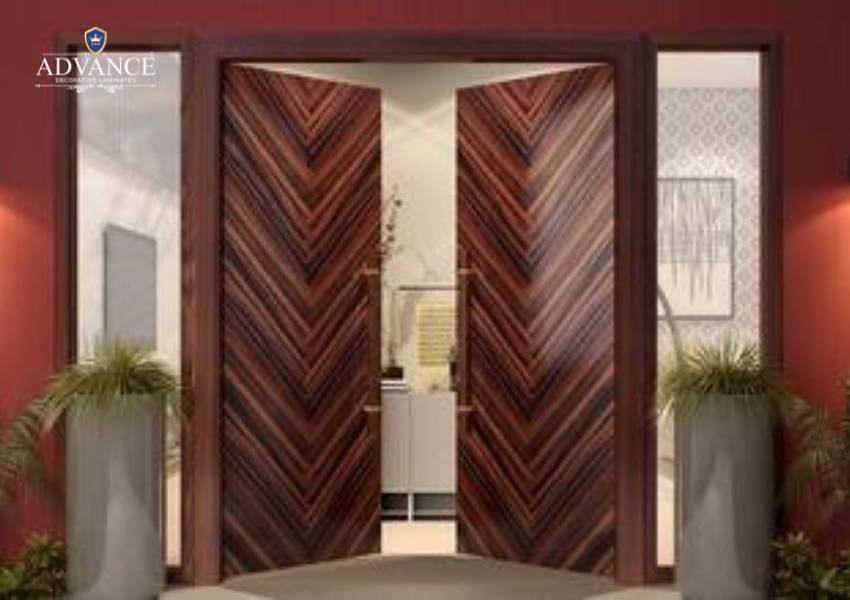
Design Ideas for Laminate Doors?
When it comes to designing with the best of laminated doors, you have a wide range of options to achieve different aesthetics and styles. Here are some design ideas for laminated doors that can help elevate the look of your interiors or exteriors:
- Wood Grain Finish: Opt for laminated doors with a wood grain finish to achieve the warm and classic look of real wood. You can choose from various wood species and finishes to match your décor, from oak and maple to cherry and walnut.
- Contemporary Minimalism: For a modern and minimalist interior, select laminated doors with sleek, solid colors and clean lines. Minimalist designs often feature doors with smooth surfaces and no visible hardware.
- Bold Color Statements: Make a statement by choosing laminated doors in vibrant or bold colors. These can serve as focal points in your space and add a pop of personality to an otherwise neutral room.
- Textured Surfaces: Explore laminated doors with textured surfaces that mimic materials like brushed metal, concrete, or leather. These textures can add depth and interest to your interior design.
- Glass Inserts: Consider laminated doors with glass inserts or panels to allow natural light to flow between rooms while maintaining privacy. Frosted or etched glass can add an elegant touch.
- Geometric Patterns: Incorporate geometric patterns on laminated doors for a contemporary and eye-catching look. Chevron, herringbone, or hexagonal patterns are popular choices.
- Contrast and Accents: Create contrast by selecting laminated doors that contrast with the surrounding walls or decor. This can make the doors stand out and create visual interest.
- Vintage and Retro Styles: If you’re going for a vintage or retro look, laminated doors with designs reminiscent of the mid-20th century can be a great choice. Think bold colors, abstract patterns, and iconic motifs.
- Bi-fold or Sliding Doors: Maximize space and create a seamless transition between indoor and outdoor areas with laminated bi-fold or sliding doors. These are particularly popular for patio or deck entrances.
- Custom Graphics: Explore the possibility of custom-printed laminates for your doors. You can incorporate unique artwork, photographs, or custom designs to make your doors truly one-of-a-kind.
- Transitional Elegance: Achieve a transitional design by selecting laminated doors that combine traditional and contemporary elements. This can include raised panels, breadboard details, and modern hardware.
- Matching Cabinetry: Coordinate your laminated doors with your kitchen or bathroom cabinetry for a cohesive look. This can create a sense of unity and flow throughout your home.
- Natural Stone or Marble Mimicry: For an upscale look, choose laminated doors that mimic the appearance of natural stone or marble. This can add a touch of luxury to your interiors.
Remember to consider the overall style and theme of your space when choosing laminated doors. The best laminated doors are those that harmonize with your design vision and enhance the overall aesthetics of your home or commercial space.
Why Choose Advance Laminate Doors?
Choosing advance laminate doors can offer several advantages, including cost-effectiveness and enhanced durability. When considering laminate doors, the cost factor is often a significant consideration. Here are some reasons why you might choose advance laminate doors, with a focus on the keyword “laminated door cost”:
- Cost-Effective Solution: Advance laminate doors are generally more affordable than doors made from solid wood, natural stone, or metal. This cost advantage makes them an attractive option for those looking to stay within a budget while achieving a desirable aesthetic.
- Durable and Long-Lasting: High-quality advance laminates are designed to be durable and resistant to wear and tear. They can withstand daily use and maintain their appearance for an extended period, reducing the need for costly replacements or repairs.
- Variety of Designs and Finishes: Advance laminates offer a wide range of design options, including wood grain patterns, solid colors, textures, and custom prints. This versatility allows you to achieve the desired look for your doors without the high cost associated with natural materials.
- Low Maintenance Costs: Laminate doors are relatively low-maintenance compared to some other door materials. They are resistant to stains, scratches, and moisture, which means you’ll spend less on upkeep and repairs over time.
- Customization Possibilities: Advance laminate doors can be easily customized to fit your specific design requirements. Whether you want a sleek modern look or a traditional aesthetic, laminates can be tailored to your preferences without the added expense of custom woodworking or metalwork.
- Environmental Considerations: Some advance laminates are made from sustainable materials, making them an eco-friendly choice. This can be a cost-effective way to contribute to environmentally responsible building practices.
- Consistent Pricing: Unlike natural materials that can vary in cost based on factors like availability and quality, advance laminate doors generally have consistent pricing, making it easier to budget for your project.
- Easy Installation: The installation of laminate doors is typically straightforward, which can help reduce labor costs compared to more complex installation processes required for certain natural materials.
- Lightweight and Easy Handling: Laminate doors are generally lightweight, which can lead to cost savings in terms of transportation and handling during installation.
While the initial cost of advance laminate doors may be lower than some other options, it’s essential to consider your specific needs, design preferences, and long-term requirements when making a decision. The cost-effectiveness of laminate doors is just one aspect to consider, and it should be balanced with factors like aesthetics, durability, and maintenance considerations to determine if they are the right choice for your project.
Conclusion:-
In conclusion, advance laminate doors offer a cost-effective and versatile solution for various door applications. Their affordability, durability, and wide range of design options make them a practical choice for homeowners and builders looking to balance budget constraints with aesthetic preferences. While they may not replicate the luxury of natural materials, laminate doors provide a durable, low-maintenance, and environmentally conscious alternative. The key advantage lies in their ability to deliver on both affordability and functionality without compromising on style. When chosen wisely, advance laminate doors can be an excellent addition to any residential or commercial space, offering long-term value and design flexibility.
FAQ
Are laminate doors suitable for both residential and commercial use?
Yes, laminate doors are suitable for both residential and commercial use. Their versatility in design, durability, and cost-effectiveness makes them a practical choice for a wide range of applications. In residential settings, laminate doors can enhance the aesthetics of interior and exterior spaces, while in commercial spaces, they offer a cost-effective yet stylish option for various door requirements, including offices, retail stores, and hospitality venues.
Are laminate doors waterproof?
Laminate doors are not inherently waterproof but are water-resistant to varying degrees. High-quality laminates, particularly high-pressure laminates (HPL), offer better water resistance due to their dense and durable construction. They can withstand occasional exposure to moisture, making them suitable for bathrooms and kitchens. However, extended or excessive water exposure can lead to damage or delamination. It’s essential to maintain proper sealing and avoid prolonged contact with water to ensure the longevity of laminate doors in wet areas.
Can laminate doors be painted or stained to change their appearance?
Laminate doors are generally not designed to be painted or stained, as their surfaces are already finished with a decorative laminate layer. Attempting to paint or stain laminate can result in poor adhesion and an uneven finish. However, if you wish to change the appearance of laminate doors, an alternative option is to use adhesive vinyl wraps or contact paper. These can be applied over the laminate to achieve a different look without damaging the original surface.
How do laminate doors compare to solid wood doors in terms of cost?
Laminate doors are generally more cost-effective than solid wood doors. Laminate doors offer a budget-friendly option, as they use layers of laminate adhered to a core material, such as particleboard, to mimic the appearance of wood or other materials. Solid wood doors, on the other hand, are crafted entirely from natural wood, making them typically more expensive due to the cost of materials and craftsmanship. Laminate doors provide a cost-effective solution for those looking to achieve a similar aesthetic without the higher price tag of solid wood.
Do laminate doors fade over time or lose their color vibrancy?
Laminate doors are generally resistant to fading and maintain their color vibrancy well over time. This resistance to fading is one of the advantages of laminates, as they are often formulated to withstand UV exposure. However, prolonged and direct exposure to harsh sunlight can potentially affect the color vibrancy over an extended period. To ensure the long-lasting appearance of laminate doors, it’s advisable to protect them from excessive sunlight and follow recommended maintenance practices.
Can laminate doors be repaired if they get damaged?
Laminate doors can be repaired to some extent if they get damaged. Minor scratches and chips can often be concealed using laminate repair kits or touch-up products that match the door’s color and texture. However, for more significant damage, such as deep gouges or extensive delamination, repairs may be challenging and may require professional assistance or even door replacement. The extent of the damage will determine the feasibility of repair options.
